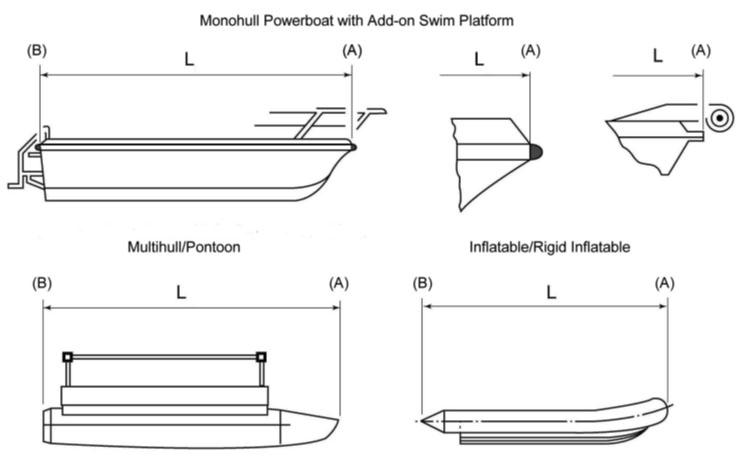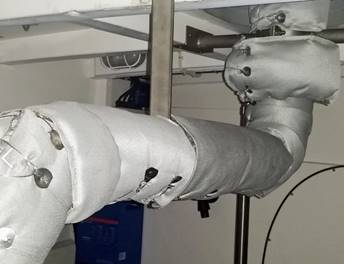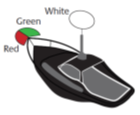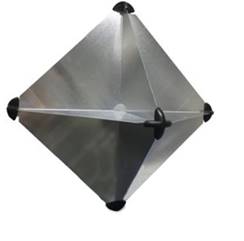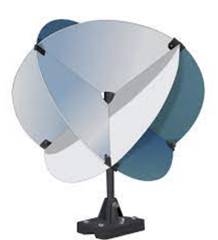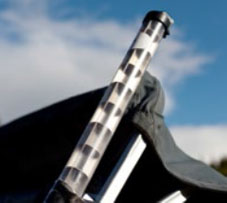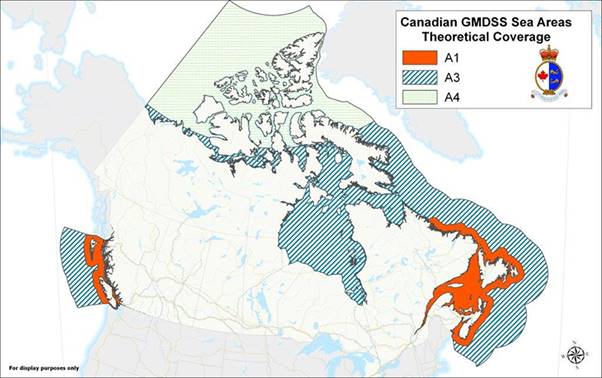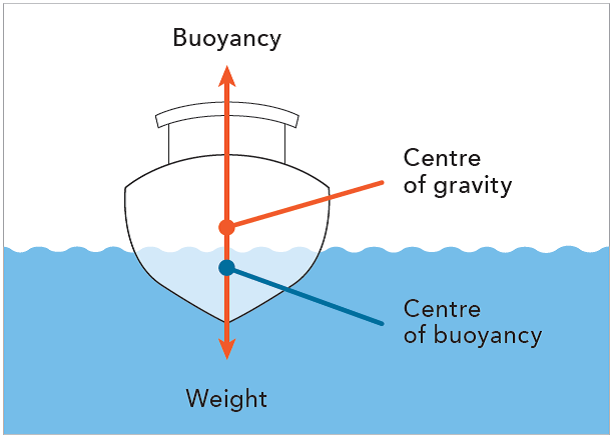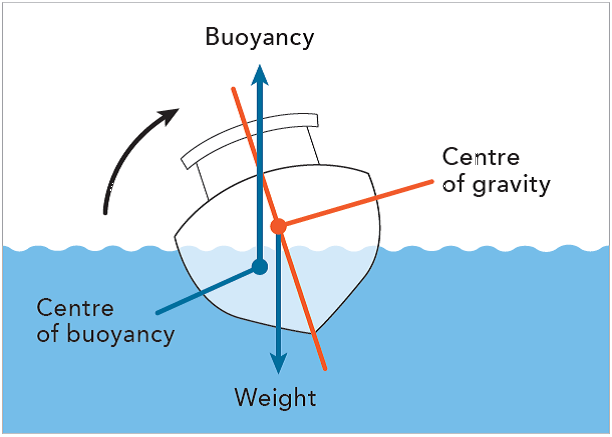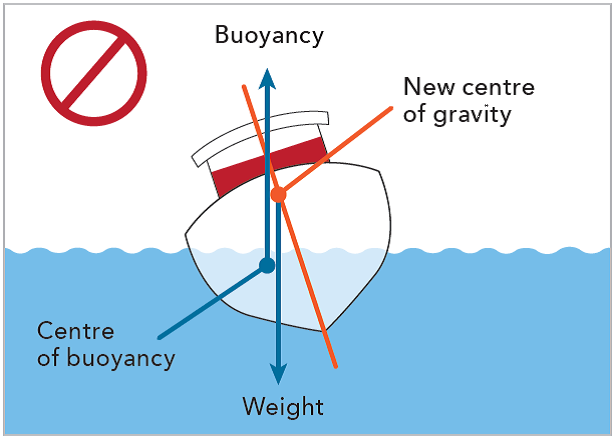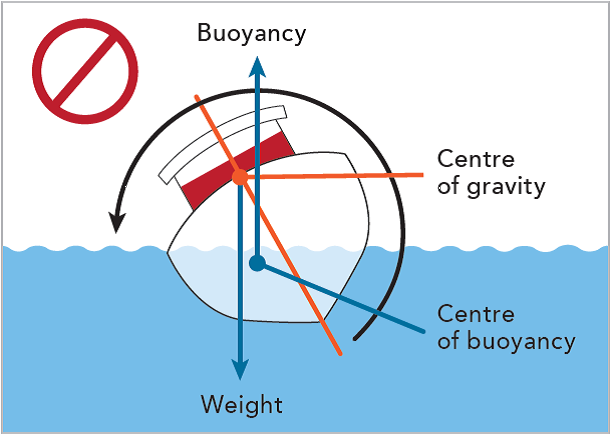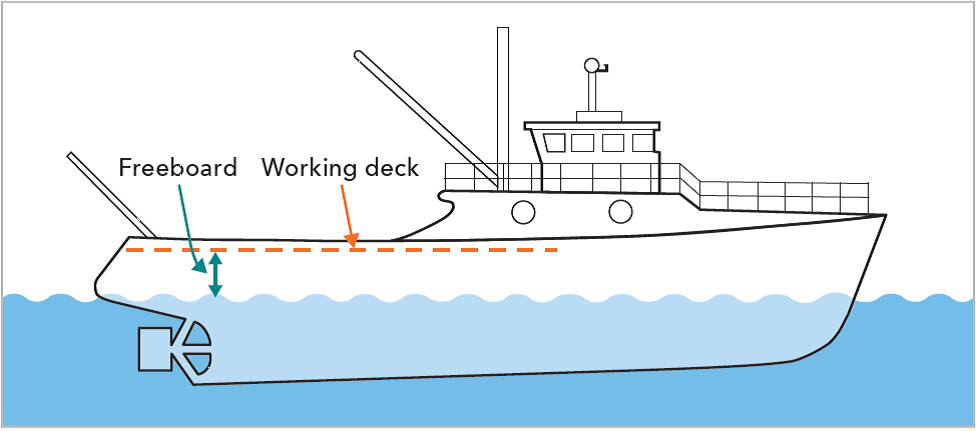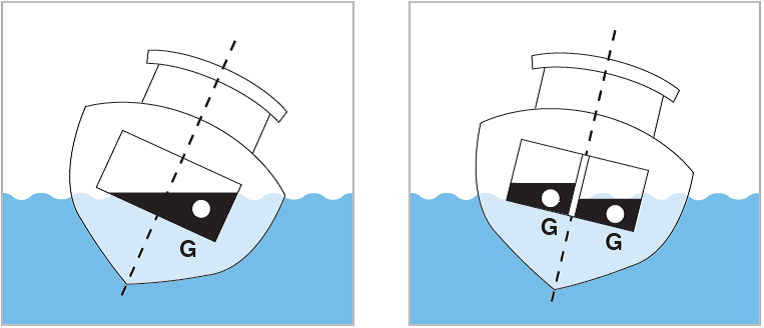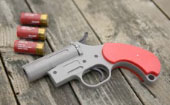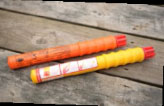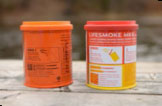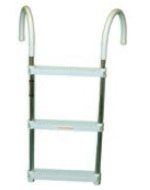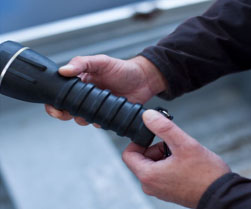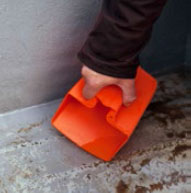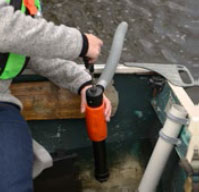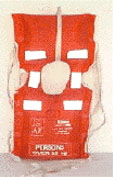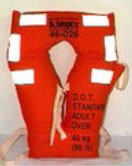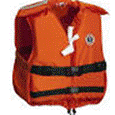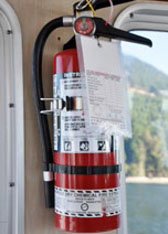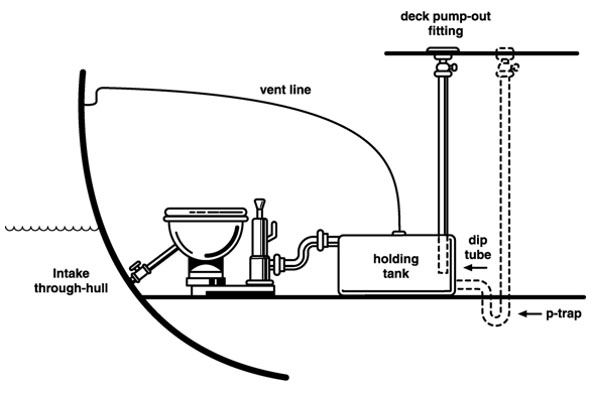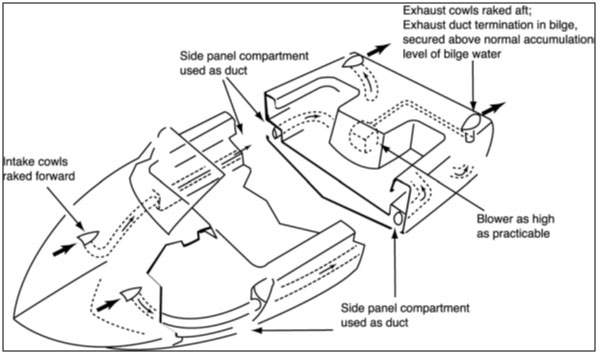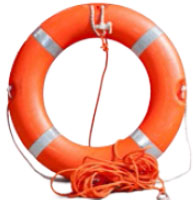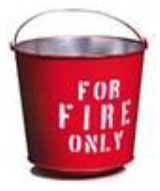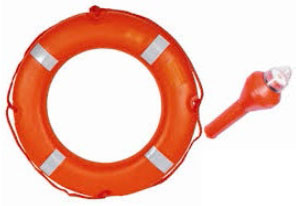Important note
The purpose of this Guideline is to assist the owners of small commercial fishing vessels of not more than 15 gross tonnage to complete their Small Fishing Vessel Detailed Compliance Report (Form 85-0509E). Each guidance note is associated with a question on the Small Fishing Vessel Detailed Compliance Report, a copy of which can be found at the SVCP Enrollment Page.
The Small Fishing Vessel Detailed Compliance Report and these Guidelines do not replace the regulations and the final authority for any regulatory requirement is the latest relevant regulations. References to regulations and standards are included in this document; however, this list is not exhaustive of all relevant regulations and standards. The reader should consult the Department of Justice website for a comprehensive list of the latest regulations under the Canada Shipping Act, 2001.
On this page
- Vessel information
- Section 1: Vessel registration
- Section 2: General requirements - operations
- Section 3: General requirements – safety procedures
- Section 4: Vessel navigation equipment
- Section 5: Vessel manning and crew qualifications
- Section 6: Notices, records and documents
- Section 7: Vessel stability
- Section 8: Vessel safety equipment general
- Section 9: Safety equipment – life-saving
- Section 10: Safety equipment – firefighting
- Section 11: Pollution prevention
- Section 12: Vessel construction – ventilation
- Section 13: Vessel construction – fuel systems
- Section 14: Personal life-saving appliances, visual signals, and firefighting equipment – vessel hull length not more than 6m
- Section 15: Personal life-saving appliances, visual signals and firefighting equipment – vessels hull length more than 6m but not more than 9m
- Section 16: Personal life-saving appliances and visual signals – vessel hull length more than 9m but not more than 12m
- Section 17: Firefighting equipment – vessel hull length of more than 9m but not more than 15m
- Section 18: Personal life-saving appliances and visual signals – vessel hull length more than 12m but not more than 15m
- Section 19: Personal life-saving appliances, visual signals and firefighting equipment – vessel hull length more than 15m
Vessel information
Important note
The purpose of this Guideline is to assist the owners of small commercial fishing vessels of not more than 15 gross tonnage to complete their Small Fishing Vessel Detailed Compliance Report (Form 85-0509E). Each guidance note is associated with a question on the Small Fishing Vessel Detailed Compliance Report, a copy of which can be found at the SVCP Enrollment Page.
The Small Fishing Vessel Detailed Compliance Report and these Guidelines do not replace the regulations and the final authority for any regulatory requirement is the latest relevant regulations. References to regulations and standards are included in this document; however, this list is not exhaustive of all relevant regulations and standards. The reader should consult the Department of Justice website for a comprehensive list of the latest regulations under the Canada Shipping Act, 2001.
Gross tonnage (GT)
Gross tonnage is the measure of the overall size of a vessel as determined in accordance with the Vessel Registration and Tonnage Regulations and the Standard for the Tonnage Measurement of Vessels (TP 13430 E) (available at Marine Safety Transport Publications (TPs)), by using one of the following:
- Form 4A: Simplified Method of Tonnage Measurement;
- Form 4B: Tonnage Measurement of a Simple Multihull Vessel;
- A duly appointed Tonnage Measurer; or
- Assigned formal tonnage.
The forms and additional information are available at Vessel licensing and registration.
Length interpretation for fishing vessels under the Fishing Vessel Safety Regulations (FVSR)
Hull length, in respect of a fishing vessel, means the distance measured from the forward end of the foremost outside surface of the hull shell to the aft end of the aftermost outside surface of the hull shell (see figure below).
Length, in respect of a fishing vessel, means, in Parts I and II of Fishing Vessel Safety Regulations,
- the distance from the fore part of the uppermost end of the stem to the aft side of the head of the stern post, except that if a stern post is not fitted to the vessel, the measurement must be taken to the foreside of the head of the rudder stock; or
- If the vessel has no rudder stock or has a rudder stock situated outside the hull at the stern, the distance from the foreside of the foremost permanent structure of the vessel to the aft side of the aftermost permanent structure of the vessel, not including guards or rubbing strakes.
Year built
If you do not know the year that your vessel was built, indicate “1900” as the year built on page 1.
Area of operation
Sheltered waters, voyage means a voyage that is
- in Canada on a river above tidal waters or on a lake, where it is impossible for a vessel to be more than 2.5 nautical miles from the closest shore;
- on the waters listed in column 1 of Schedule 1 during the period specified in column 2; or
- made by a ferry between two or more points listed in column 1 of Schedule 2 during the period specified in column 2.
Inland Voyage, means a voyage that is not a sheltered waters voyage and is
- on the inland waters of Canada; or
- on the inland waters of Canada together with any part of a lake or river forming part of the inland waters of Canada that lies within the United States, or on Lake Michigan.
Near coastal voyage, Class 2, means a voyage
- that is not a sheltered waters voyage or an inland voyage; and
- during which a vessel is always
- 25 nautical miles or less from shore in waters contiguous to Canada, the United States (except Hawaii) or Saint Pierre and Miquelon, and
- 100 nautical miles or less from a place of refuge.
Near coastal voyage, Class 1, means a voyage
- that is not a sheltered waters voyage, an inland voyage or a near coastal voyage, Class 2;
- that is between places in Canada, the United States (except Hawaii), Saint Pierre and Miquelon, the West Indies, Mexico, or Central America, or on the northeast coast of South America, including on any navigable waters connected with that coast; and
- during which a vessel is always
- north of latitude 6°N, and
- 200 nautical miles or less from shore or above the continental shelf.
Unlimited Voyage, means a voyage that is not a sheltered waters voyage, an inland voyage, a near coastal voyage, Class 2 or a near coastal voyage, Class 1.
Note: The definitions of the voyage classifications are found in the Vessel Safety Certificates Regulations, section 1.
Sea Area A1 means an area within the radiotelephone coverage (40 nautical miles) of at least one VHF coast station in which continuous DSC alerting is available.
Sea area A2 means an area, excluding sea area A1, within the radiotelephone coverage of at least one medium frequency (MF) coast station in which continuous DSC alerting is available.
Sea area A3 means an area, excluding sea area A1 and sea area A2, within the coverage of a mobile-satellite service that is recognized by the IMO and supported by the ship earth station carried on board in which continuous alerting is available.
Sea area A4 means an area outside of sea area A1, sea area A2 and sea area A3.
Note: The definitions of the Sea area classification are found in section 200 of the Navigation Safety Regulations, 2020
Principal operator certification and training
Fishing Master, First Class. The general requirements for Fishing Master, First Class are found in the Marine Personnel Regulations, section 139. The Fishing Master, First Class training program description is found in Chapter 21 of Transport Publication (TP) 2293 available Marine Publications Abstracts.
Fishing Master, Second Class. The general requirements for Fishing Master, Second Class are found in the Marine Personnel Regulations, section 140. The Fishing Master, Second Class training program description is found in Chapter 22 of Transport Publication (TP) 2293 available at Marine Publications Abstracts.
Fishing Master, Third Class. The general requirements for Fishing Master, Third Class are found in the Marine Personnel Regulations, section 141. The Fishing Master, Third Class training program description is found in Chapter 23 of Transport Publication (TP) 2293 available at Marine Publications Abstracts.
Fishing Master, Fourth Class. The general requirements for Fishing Master, Fourth Class are found in the Marine Personnel Regulations, section 142. The Fishing Master, Fourth Class training program description is found in Chapter 24 of Transport Publication (TP) 2293 available at Marine Publications Abstracts.
Certificate of Service as Master of a Fishing Vessel of Less Than 60 Gross Tonnage. The general requirements for Certificate of Service as Master of a Fishing Vessel of Less Than 60 Gross Tonnage are found in the Marine Personnel Regulations, section 143. The Certificate of Service as Master of a Fishing Vessel of Less Than 60 Gross Tonnage general requirements are found in Chapter 25 of Transport Publication (TP) 2293 available at Marine Publications Abstracts. First issuance of this certificate is no longer permitted under the Marine Personnel Regulations. Holders of this certificate must have it renewed every five years to keep it valid for use.
SVOP – Small Vessel Operator Proficiency. The SVOP training program description is found in Transport Publication (TP) 14692 E (available at Marine Safety Transport Publications (TPs)).
PCOC – Pleasure Craft Operator Card. The PCOC is obtained after passing an accredited boating safety test. To find a course provider in your area, visit Office of Boating Safety.
ROCM - Restricted Operator’s Certificate (Maritime). The ROC(M) is required by anyone using a marine VHF radio or other marine radios (each person on the vessel who will use the radio needs their own card).
ROCMC – Restricted Operator’s Certificate – Maritime Commercial. The Restricted Operator’s Certificate - Maritime Commercial (ROC-MC) is intended for mariners serving on compulsorily fitted non-pleasure vessels within the North American A1 Sea Area as defined in the Navigation Safety Regulations, 2020
First Aid – “Marine advance first aid certificate” is required by any person designated to provide first aid on board a vessel that is engaged on a near coastal voyage, class 1 or unlimited voyage. “Marine basic first aid certificate” is required by any person designated to provide first aid on board a vessel that is engaged on a near coastal voyage, class 2, Inland voyage or sheltered waters voyage. SSB-03/2009 allows for acceptance of non-Marine FA Training certificates.
Small Non-Pleasure Domestic Vessel Basic Safety (SDV-BS). Formerly called MED A3. The training program description is found in Transport Publication (TP) 4957 available at Marine Publications Abstracts.
Domestic Vessel Safety (DVS). Formerly called MED A1. The DVS training program description is found in Transport Publication (TP) 4957 available at Marine Publications Abstracts.
Additional Resource are available at:
- Personnel Training, Examination and Certification (canada.ca)
- Register to the YouTube channel of the Transportation Safety Board (TSB)
- Guide d’information de la CNESST : Santé et sécurité à bord des bâtiments de pêche (in french only)
- Transport Canada Small Commercial Vessel Safety Guide - TP 14070 E (2010) (Stay tuned for the new version that will be released soon and will be available at Marine safety in Canada)
- For free Safety Checklists, Marine Quick Reference Guide, and Safety for all vessels and Crew, see: Gearing up for safety from WorkSafe BC
- Working Safety on the Fraser River: best practices for all vessels is another great product from WorkSafe BC
- For guidance on how to develop a safety management system and how to familiarize new people on board: Comité permanent sur la sécurité des bateaux de pêche du Québec (CPSBPQ)
Section 1: Vessel registration
General statement
The authorized representative must ensure that the vessel, its machinery and equipment meet the requirements of the regulations, develop procedures for the safe operation of the vessel and for dealing with emergencies, and ensure that the crew receive safety training.
The responsibilities of a vessel’s authorized representative, master and crew concerning vessel safety are set out in Part 4 of the Canada Shipping Act, 2001.
Note: For more information on developing procedures, and to find templates for procedures common to normal operation of most vessels, visit Templates for Small Commercial Vessel Procedures and Records.
Question 1 (Is the vessel registered?)
Section 46 of the Canada Shipping Act, 2001 (CSA 2001) requires that all vessels (except for those listed below) be registered in either the Canadian Register of Vessels or in the Small Vessel Register. No vessel shall be operated without a valid Certificate of Registry if that vessel is required to be registered.
You are not required to register vessels that carry less than 12 passengers, and if it is a:
- Commercial human-powered vessel, such as canoes and kayaks, or
- Small sailing vessel less than 8.5 meters, or
- Small power-driven vessel with motors less than 7.5 kW (10 horsepower).
If your small commercial vessel is exempt, you can still choose to register it voluntarily.
You can find a full list of exemptions in the Vessel Registration and Tonnage Regulations, Subsection 1.1. If you own and operate an exempt vessel, you must still comply with all construction , safety and pollution prevention requirements.
All information, including payment, is available online via the new Transport Canada website: Apply for or manage a vessel registration
Just looking for a Vessel registration Forms, click here.
Need help? For general questions or if you can't submit or pay your application online, call:
- Toll-free telephone: 1-877-242-8770
- TTY: 1-888-675-6863
Hours of operation are Monday to Friday, 8:00 a.m. to 5:00 p.m. EST
For technical support or for specific questions, email vr-ib@tc.gc.ca.
Important fact!
A valid certificate of registry must be on board your vessel at all times.
If any information in your certificate of registry changes, you must report the change within 30 days. A new certificate of registry for every vessel affected by the change will be re-issued for free.
You must report changes to:
- your personal information
- the authorized representatives information
- the vessel details
If a change isn't reported, your vessel's registration may be suspended or cancelled.
Operating an unregistered vessel could result in a fine. The penalty for operating an unregistered vessel is $260 to $10,000 per day.
(Canada Shipping Act 2001, Section 46), (Vessel Registration and Tonnage Regulations, Subsection 1.1)
Question 2 (Is the official number/commercial number (registration number) properly marked on the vessel?)
Your Certificate of Registry is not valid until the vessel has been marked in accordance with the instructions on the Certificate of Registry.
If your vessel is registered in the Small Vessel Register, it must be marked with the Official Number (C Number, example: C12345AB) in block characters not less than 75 millimetres high and in a colour that is in contrast with the background. This Registration number must be located on each side of the bow of the vessel, or on a board permanently attached to the vessel as close to the bow as practicable.
If your vessel is registered in the Canadian Register of Vessels, it must be marked with the name of the vessel and Port of Registry in clearly legible letters (Latin alphabet or Arabic or Roman numerals) at least 10 centimetres in height, on some clearly visible exterior part of the hull such as the bow and the stern. The Official Number (example: O.N. 897654) and registered tonnage must be marked on some clearly visible interior part of the hull in block-type Arabic numerals at least 4 centimetres in height.
More info via Marking your vessel website.
Question 3 (Since it was built, have any structural/mechanical changes and/or damages occurred to the vessel, or has the intended use of the vessel changed?)
To ensure that your certificate remains valid, you must report in writing any change(s) to the information shown on the certificate (including a change of address) to the Vessel Registration in Ottawa within 30 days of the change.
You must also record any modifications to the vessel on the fishing vessel modification history form as described in Ship Safety Bulletin (SSB) 03/2019.
Failure to report may result in Transport Canada Marine Safety & Security (TCMSS) suspending or cancelling your vessel’s registry and rendering your Certificate of Registry invalid.
Other guidance:
Question 4 (Is the certificate of registry on board?)
Once a Certificate of Registry has been issued, it must be carried on board at all times. No person shall operate a vessel in respect of which a certificate of registry or provisional certificate has been issued unless the certificate is on board.
The certificate of registry (for a vessel in the Small Commercial Vessel Registry) is valid for 5 years, it is the owner’s responsibility to renew their registration before the certificate expires. Form 20 is used when renewing your vessel registration, the completed form can be submitted online at the Vessel Registration Renewal Website, or via email at: vr-ib@tc.gc.ca.
The certificate of registry for a vessel in the Canadian Register of Vessels is valid for 3 years. Renewals are sent from Transport Canada Vessel Registration in Ottawa prior to the expiration of the certificate.
Section 2: General requirements – operations
Question 5 (Is the vessel designed, constructed and equipped to operate safely and be seaworthy in its area of operation?)
Your fishing vessel must be “fit for purpose”. Seaworthy means your fishing vessel is:
- Properly constructed;
- Equipped with all necessary lifesaving and navigation equipment;
- Sufficiently manned; and
- Good enough to travel and operate safely at sea.
Other guidance:
Question 6 (Is the fishing vessel, its machinery and equipment maintained to ensure a safe operating condition?)
You must maintain your fishing vessel, its machinery and its equipment in good working order and keep records of maintenance on board. This reduces the likelihood of having unexpected breakdowns at sea and keeps your vessel seaworthy.
Other guidance:
- Transport Canada Safety Video – My Vessel, My Responsibility
- Fish Safe NS - Harvesting Safety Resource
- Gearing Up For Safety - Safe Work Practices for Commercial Fishing in British Columbia
- Fish Harvesters Safety Association – Maintenance logs and checklists
(Fishing Vessel Safety Regulations, Part 0.1, Section 3.04(1))
Question 7 (Do you know it is not permitted to operate a fishing vessel when a freezing spray warning has been issued, unless the vessel's stability assessment demonstrates that the vessel has the capability to operate safely in freezing spray conditions when ice build up is likely to occur?)
If you intend to operate your fishing vessel in freezing spray conditions when ice build-up on the superstructure is likely to occur, your vessel’s stability assessment must demonstrate that the vessel is capable of operating safely in those conditions.
A fishing vessel should not operate in ice unless:
- Its hull has been designed or adequately strengthened to resist damage from anticipated conditions;
- Its machinery and steering equipment have been protected against damage and the effects of slush ice choking; and
- It is capable of navigating safely through the waters.
For more information on requirements for operating in ice, see Canadian Coast Guard publication Ice Navigation in Canadian Waters.
(Fishing Vessel Safety Regulations, Part 0.1, Section 3.05(1))
Question 8 (Does the vessel carry on board means to remove accumulated ice from the vessel?)
If your area of operation includes areas where ice can build up on your vessel, you must carry de-icing equipment on board such as mallets, shovels, picks, or other de-icing means.
(Fishing Vessel Safety Regulations, Part 0.1, Section 3.05(2))
Question 9 (If your vessel is put into service for the first time, did the AR inform the minister of the intention to operate the vessel or permit its operation; of the physical characteristics of the vessel; and the nature of its operation?)
This question applies to a fishing vessel which is being put into service for the first time. A fishing vessel must not operate unless the authorized representative has informed the Minister of:
- The intention to operate the fishing vessel or permit its operation;
- The physical characteristics of the fishing vessel; and
- The nature of its operation.
Question 10 (Do you know, no one shall operate or permit another person to operate a fishing vessel under circumstances that exceed its design limitations?)
No one must operate or permit another person to operate a fishing vessel under circumstances that exceeds its design limitations. The Authorized Representative is to obtain the vessels design limitations from the builder or manufacturer of the vessel. If the vessel has undergone any major modifications, a new stability assessment would need to be conducted by a competent person.
For further guidance on understanding your stability requirements refer to Question 49, 50, and 51 in this document.
Another method that can be used to determine your vessels design limitations is to use ISO Design Categories and stability standards ISO 12217.
To learn more about the stability standards or vessel stability in general, visit the vessel stability page on the Transport Canada Marine Safety website.
Question 11 (Do you know that no one shall operate a fishing vessel in a careless manner?)
No one shall operate a fishing vessel in a careless manner, without due care and attention or without reasonable consideration for other persons.
Other guidance:
Question 12 (Do you know that no one shall operate a fishing vessel in environmental conditions or circumstances that could jeopardize the safety of the persons on board unless an approved lifejacket or personal floatation device is worn by all persons on board in case of a fishing vessel that has no deck or deck structure or by all persons on deck in case of a fishing vessel that has a deck or deck structure?)
No one shall operate or permit a person to operate a fishing vessel in environmental conditions or in circumstances that may cause a danger or a risk to the safety of persons on board unless a lifejacket required by these Regulations, or a personal flotation device that meets the requirements set out in section 3.20 of the FVSR is worn:
- by all persons on board, in the case of a vessel that has no deck or deck structure; or
- by all persons on the deck or in the cockpit, in the case of a vessel that has a deck or deck structure.
Other guidance:
- Inspection and Maintenance of Inflatable Lifejackets and Personal Flotation Devices – SSB No.: 12/2019
- Guide d’information de la CNESST : Santé et sécurité à bord des bâtiments de pêche - Partie A, sections 6 et 19 (in French only)
- Transport Canada Safety Video – My Vessel, My Responsibility
- Fish Safe NS - Harvesting Safety Resource
- Gearing Up For Safety - Safe Work Practices for Commercial Fishing in British Columbia
Question 13 (Are watertight and weathertight openings (e.g. hatches) which are exposed to the weather and to the sea kept closed while at sea unless it is necessary for them to be open for operations, provided that there is no danger of water entering the interior spaces of the hull?)
Watertightness and weathertightness
Watertight, in respect of a structure, means capable of preventing the passage of water through the structure in any direction under a head of water for which the structure is designed.
Watertightness, in practical terms, refers to the ability of a vessel or any of its fixtures and appliances to keep out water under the head of pressure to which it is exposed. No water shall enter a vessel for example, through the hull. (One standard for determining whether your deck appliances are watertight and fit for their intended purpose is ISO standard 12216: Small craft – Windows, port lights, hatches, deadlights and doors – Strength and watertightness requirements.)
Weathertight, in respect of a fishing vessel, means that in any sea conditions water will not penetrate into the vessel.
Weathertightness, in practical terms, means that in any sea conditions water will not penetrate into the vessel through the appliance. For example, if a weathertight door is tested with a normal garden hose, a few drops may penetrate through the door after a few minutes’ exposure. To avoid downflooding, all appliances above the deck (i.e., deck hatches, windows and doors) must be designed and fitted to prevent the substantial ingress of water when closed. These appliances, on fishing vessels, must be able to provide protection against the ingress of water when subject to temporary immersion.
The watertightness of the hull and deck structures of a vessel is of great importance because these spaces provide the reserve buoyancy and the subsequent reserves of stability for the vessel at various angles of heel. Secure all watertight openings (doors, hatch covers, windows, etc.) in the hull and deck structure when not in use, to prevent downflooding. All watertight openings must be inspected regularly to ensure their tightness.
Keeping water out of a vessel is of great importance from a stability perspective. Unwanted water entry reduces stability in several ways:
- The added weight will reduce freeboard.
- Water will accumulate on the low side of a listed vessel, increasing the list.
Other guidance:
Question 14 (Are tools and spares on board, securely stowed and accessible?)
As a minimum, the vessel must carry the manufacturer’s recommended spares for any vessel equipment. Suggested additional equipment, as applicable, includes the following:
| Combination wrench set 8-24 mm | Fuel injector with sealing washer |
| Adjustable wrenches 6" and 10" | Fuel injection pipe with end fitting |
| Pipe wrench 18" | 1 set of spare parts for engine waterpump |
| Ballpein hammer 0.5 kg | V-belt for alternator, waterpump, etc. |
| Combination pliers 6" | Cartridge for fuel and lub-oil filters |
| Pump pliers 12" | Gland packing for stern tube with special wrench |
| Vice grip 10" | Spare parts for manual pump |
| Diagonal cutting plier 6" | Coil of copper wire, stiff steel wire |
| Hacksaw with spare blades | Insulating tape, tape for pipe threads |
| Cold chisel | Spare bulbs and fuses |
| Flat single-cut file fine | Engine oil 2.5 litres, oil squirt can |
| Flat screwdrivers 3 mm, 6 mm, 10 mm | Grease gun |
| Pozdrive screwdrivers no. 2 and 3, Philips, type 1 | Gasket cement, epoxy glue |
| Hand drill | Assorted bolts, nuts, washers, screws, hoseclips |
| One set of different drill sizes high speed 3-10 mm | Waterproof Flashlight |
Other guidance:
Question 15, 16 & 17 (Is the vessel refueled in a safe manner? Are portable fuel-burning equipment or appliances well secured and used only in a well-ventilated location? When not in use, are portable fuel-burning equipment or appliances stored in a well-ventilated location that is isolated from heat and ignition sources?)
- If your fishing vessel is gasoline-powered and fitted with a portable fuel tank, you must remove it from the vessel before refueling. When refueling, do not top off the tanks. Clean up any spilled fuel. You should follow proper refueling procedures. Persons must not carry liquid fuel on board a fishing vessel in a portable container that has not been designed to carry the fuel. The container must be an approved type.
- If your fishing vessel is gasoline-powered and fitted with a fixed fuel tank, the person fueling the vessel should be the only person on board during refueling.
- Before refueling begins, all electrical equipment must be switched off, all doors, windows and ports must be closed, all engines shut off and all open flames, including pilot lights extinguished.
- A portable fuel-burning equipment carried on board a fishing vessel must be fully secured to prevent movement at sea and must be placed in a well-ventilated area where there is no possibility of fuel vapors accumulation.
- A portable fuel tank containing fuel and carried on board a fishing vessel must be stored as far away as practical from heat and ignition sources, machinery spaces and crew’s quarters.
Other guidance:
- Guide d’information de la CNESST : Santé et sécurité à bord des bâtiments de pêche - Partie A, section 2 (in french only)
- Fish Harvesters Safety Association - Printable Refueling Procedures
(Fishing Vessel Safety Regulations, Part 0.1, Sections 3.14 and 3.15)
Question 18 (Are all engine exhaust pipes, heater equipment or other items which can become hot well insulated to prevent burn-out of adjacent surfaces such as woodwork or other flammable materials?)
Most vessel fires are the result of electrical problems, fuel leaks or vapors, unwatched portable heaters, improper engine exhaust installation and poor housekeeping. Never leave any combustible material in contact with the engine exhaust or any other hot surfaces.
All exposed exhaust ventilation pipes are required to be fully covered with an acceptable thermal insulation:
Section 3 General requirements – safety procedures
QUESTION 19 & 20 (Do you have written safety procedures for safely operating the vessel, including dealing with emergencies? Do you hold drills on board for crew to be proficient with these safety procedures?)
You must establish written safety procedures. According to section 3.16 of the Fishing Vessel Safety Regulations, you must implement and familiarize persons on board with:
- the location and use of all safety equipment;
- all the measures they must take to protect persons on board, in particular measures to:
- prevent persons from falling overboard,
- retrieve persons who have fallen overboard,
- protect limbs and hair from rotating equipment, and
- avoid ropes, docking lines, nets and other fishing equipment that may pose a safety hazard to persons on board;
- in the case of beam trawling and purse seining operations, the quick release of loads they can activate in an emergency;
- all the firefighting measures they must take to prevent fires and explosions on the vessel;
- if the vessel has a deck or deck structure, all the measures they must take to maintain watertightness and weathertightness and to prevent flooding of the interior spaces of the hull or, if the vessel has no deck or deck structure, all the measures they must take to prevent swamping of the vessel;
- all the measures they must take to ensure safe loading, stowage and unloading of fish catches, baits and consumables; and
- the operation of towing and lifting equipment and the measures they must take to prevent overloading of the vessel.
Transport Canada has created some common operational and safety procedure templates that you can download and adapt for your use. Be sure to also create and implement additional procedures that represent the specific configuration of your vessel, its equipment and your fishing practices.
Other guidance:
- Guide d’information de la CNESST : Santé et sécurité à bord des bâtiments de pêche - Partie A, section 5 (in French only)
- TSB Publication – Fishing Safety, Working Together
- Publication de la CNESST : Partez en mer en toute sécurité (in French only)
- Fish Harvesters Safety Association - Printable Templates and Procedures
- Fish Safe NS – Safe Work Procedures
(Canada Shipping Act 2001, Section 106), (Marine Personnel Regulations, Sections 205 and 206), (Fishing Vessel Safety Regulations, Part 0.1, Section 3.16(1))
Question 21 (Are there procedures for the operation of engine space blowers in gasoline powered vessels?)
Enclosed gasoline engine and fuel tank compartments must have a blower and an underway ventilation system in accordance with the Fishing Vessel Safety Regulations, Part 0.1 Section 3.13 and Part II Sub-sections 56(8) and (9). Immediately before every start up, the blower must be operated for at least four minutes or the length of time recommended by the vessel manufacturer, whichever is longer.
Check that the blower works properly and verify that the associated ductwork is free from leaks.
You should post a notice similar to the one below at the normal operation positions.
Warning
Gasoline vapour may explode resulting in injury or death. Before starting the engine, operate blower for 4 minutes and verify blower operation
Question 22 (Do you know it is not allowed to have fuel leakage within or from a fishing vessel?)
No person shall permit fuel leakage within or from a fishing vessel.
(Fishing Vessel Safety Regulations, Part 0.1, Section 3.14(1))
Section 4 Vessel navigation equipment
Question 23 (Is a sound-signalling device on board?)
All vessels under 12 m length overall without a fitted sound-signaling appliance must carry a sound-signaling device. This can be a pea-less whistle, a hand-held compressed gas horn or an electric horn.
All vessel of 12 m or more in length shall carry a whistle, this does not include pea-less whistles, typically a horn would be more appropriate rather than a whistle. More detailed requirements of sound signaling devices can be found in Annex III of Schedule 1 in the Collision Regulations.
You can find additional information in the Collision Regulations, Rule 33.
Other guidance:
(Collision Regulations), Rule 33(a), (Fishing Vessel Safety Regulations, Part 0.1, Section 3.36(b))
Question 24, 25 & 26 (Does your vessel meet the colreg requirements with regards to navigation lights and shapes? Are navigation lights installed on your vessel in accordance with tp 127? Does your vessel have a radar reflector?)
The vessel must carry the navigation lights and shapes required for it to comply with the Collision Regulations. A summary of the requirements for small fishing vessels is in the table below. The full requirements are in Part C of the Collision Regulations. The navigation lights must be designed and manufactured for that purpose. Navigation lights must be properly installed: use only those bulbs recommended by the light manufacturer for the required range of visibility and ensure there is sufficient power for the lights throughout the duration of the voyage. Batteries providing power for the lights must be adequately protected and firmly secured.
Required Lights and Shapes
| Vessel Operation | Lights and Shapes to be Exhibited |
|---|---|
| Vessel underway |
|
| Engaged in trawling (underway or at anchor) |
|
| Engaged in fishing other than trawling (underway or at anchor) |
|
| When at anchor |
|
| When aground |
|
| When not under command |
|
Vessel 12-20m in length
Vessel 12-20 m in length
"Masthead light" means a white light placed over the fore and aft centerline of the vessel showing an unbroken light of 225 degrees, fixed to show the light from right ahead to 22½ degrees aft of the beam on either side of the vessel.
"Sidelights" means a green light on the starboard side and a red light on the port side each showing an unbroken light of 112½ degrees, fixed to show the light from right ahead to 22½ degrees aft of the beam on its respective side.
"Stern light" means a white light placed as near as practicable at the stern showing an unbroken light of 135 degrees, so fixed as to show the light 67.5½ degrees from right aft on each side of the vessel.
Vessel less than 12m in length
Vessel less than 12 m in length
"All-round light" means a light showing an unbroken light of 360 degrees.
All shapes must be black in color.
If the vessel is less than 12 m in length the vessel may exhibit an all-round white light instead of a masthead light and stern light.
Note: The masthead light or all-round white light on a power-driven vessel of less than 12 m in length may be offset from the fore and aft centerline of the vessel if centerline fitting is not practicable, provided that the sidelights are combined in one lantern which must be carried on the fore and aft centerline of the vessel or located as nearly as practicable in the same fore and aft line as the masthead light or the all-round white light.
Your vessel documentation should include information to show the make and rating of the navigation lights. If not, the lights may be marked or stamped with an approval information. The stated visibilities in the navigation light information must meet the requirements below.
Visibility of Lights:
- In vessels of 12 m or more in length but less than 50 m in length:
- a masthead light, five miles; except that where the length of the vessel is less than 20 m, three miles
- a sidelight, two miles
- a stern light, two miles
- a towing light, two miles
- a white, red, green or yellow all-round light, two miles
- In vessels of less than 12 m in length:
- a masthead light, two miles
- a sidelight, one mile
- a stern light, two miles
- an all-round light, two miles
Common types of radar reflectors:
The vessel must be equipped with a radar reflector or other means to enable the vessel’s detection by other vessels navigating by radar.
(Collision Regulations, Rules 21, 22, 26, 27, 30, 40 and 46; and Collision Regulations, Annex 1, Section 15)
Question 27 & 28 (Are the required compass(es) on board? Are you able to illuminate the compass?)
A vessel over 8 m must be fitted with a compass. This compass should be one you are able to adjust and correct for deviation, as well as light up for night viewing. If the vessel is not more than 8 m in length and navigates within sight of seamarks, it must carry at minimum, a hand-held compass.
(Fishing Vessel Safety Regulations, Part 0.1, Section 3.35), (Navigation Safety Regulations, 2020, Section 106)
Question 29 (Does your vessel carry on board the required nautical publications and navigation accessories?)
Every vessel should have on board, in respect of each area in which the ship is to be navigated, the most recent editions of the charts, documents and publications required by the Navigation Safety Regulations 2020.
Every vessel that is required to carry charts and nautical publications must be fitted with navigating accessories such as parallel rulers, dividers and binoculars.
A vessel of less than 100 gross tonnage is not required to have on board these charts, documents and publications if the person in charge of navigation has sufficient knowledge of the following information, such that safe and efficient navigation in the area where the vessel is to be navigated is not compromised:
- The location and character of charted
- Shipping routes
- Lights, buoys and marks, and
- Navigational hazards; and
- The prevailing navigations conditions, taking into account such factors as tides, currents, and ice and weather patterns.
If the Regulations do not require you to carry these charts, documents and publications on your vessel, you should consider carrying them as a safety best practice.
Question 30 (Is there suitable means for determining the depth of water?)
Suitable means of determining water depth can be a hand lead line or echo sounding equipment or other electronic means for measuring and displaying available depth of water.
(Fishing Vessel Safety Regulations, Part 0.1, Sections 3.36(a))
Question 31, 32, 33 & 34 (Is there a two-way marine VHF radiotelephone at the conning position? Is there a VHF-DSC radio on board? Is the VHF-DSC radio connected to a GPS? Is the VHF-DSC radio programmed with a valid MMSI number?)
A vessel more than 8m in length on a voyage, any part of which is in Sea Area A1, within VHF coverage of a Canadian Coast Guard station or on a voyage more than five nautical miles from shore on the seacoasts of Canada, must be fitted with a non-portable VHF radiotelephone capable of DSC.
If radio equipment is capable of automatically providing the vessel’s position when transmitting a distress alert, the vessel’s position, and the time the vessel was at that position must be made available from a GNSS receiver for transmission by the radio equipment. The receiver may be integral to the VHF radio installation capable of DSC. For more information, refer to Navigation Safety Regulations 2020.
VHF/DSC equipment must be programmed with the correct Maritime Mobile Service Identity (MMSI) numbers. MMSI number must be displayed near the VHF radio. For more information on Maritime Mobile Service Identity numbers contact Innovation, Science and Economic Development Canada.
A VHF radiotelephone on a vessel must be capable of transmitting and receiving communications on:
- the distress and safety frequency of 156.8 MHz (channel 16);
- the primary inter-vessel safety communication frequency of 156.3 MHz (channel 6);
- the bridge-to-bridge communication frequency of 156.65 MHz (channel 13);
- the public correspondence frequency specifically assigned for the area in which the vessel is navigating; and
- any other VHF frequencies that are necessary for safety purposes in the area in which the vessel is navigating.
Radio installations should have a reserve battery with a capacity sufficient for the duration of the voyage. The reserve source of energy should be independent of the vessel’s engine and electrical system.
Note: Sea Area A1 is within range of shore-based VHF/DSC coast station (40 nautical miles). See figure below for visual representation:
Other guidance:
- TP 14070E – Small Commercial Vessel Safety Guide – Chapter 10 Communication Equipment
- Maritime Mobile Service Identities (MMSIs) and Maritime Identities (MIs)
(Navigation Safety Regulations, 2020, Section 204, 220, 222 and 223)
Question 35 (Is the 406 MHZ EPIRB properly registered with the Canadian beacon registry?)
Some vessels would not be required to carry an EPIRB. For vessels 12m or less they could choose to carry a Personal Locator Beacon (PLB) or in the case of a vessel less than 8m, a waterproof portable VHF-DSC handheld radio.
Note: Ensure that if you carry on board an EPIRB (Emergency Position Indicating Radio Beacon), or PLB, that it is registered properly, as it facilitates the task of the SAR authorities in an emergency and helps to eliminate false alarms.
EPIRB carriage is dependent on vessel length, voyage and other safety equipment carried. Please contact your nearest TCC for more information.
Other guidance:
Question 36 (Does your 406 MHF EPIRB MHZ EPIRB and/or PLB battery, and if installed HRU, have a valid expiration date?)
The validity of required safety equipment is given in the table below.
| Safety Equipment | Validity |
|---|---|
| EPIRB battery | As indicated on battery |
| EPRIB Hydrostatic Release Unit | As indicated on unit |
| PLB battery | As indicated on battery |
Other guidance:
Question 37 (Is there a radio distress procedure card?)
Every vessel must have a card of instructions, visibly displayed, setting out a clear summary of the radio distress procedures.
Does the vessel have a Radio Record Book? (Navigation Safety Regulations 2020 s247).
TC has one available online. TP 13926E Radio Logbook for Canadian Flag Vessels.
Section 5 Vessel manning and crew qualifications
Question 38 (Are crew certificates of competency/training available?)
The minimum qualification required by the master of a fishing vessel not more than 15 gross tonnage is determined by the length of the vessel and the area of operation, as presented in the table below.
Required Nautical Certificate
| Area of Operation | Unlimited Voyage | Near Coastal 1 | Near Coastal 2 | Sheltered Waters | |
|---|---|---|---|---|---|
| >2 Nm. from shore | <2 Nm. from shore | ||||
| Minimum Required Qualification | Fishing Master, First Class | Fishing Master, Fourth Class | SVOP (Small Vessel Operator Proficiency) for vessels not more than 12 m in overall length | PCOC (Pleasure Craft Operator Card) for vessels not more than 12 m in overall length | PCOC (Pleasure Craft Operator Card) for vessels not more than 12 m in overall length |
A Certificate of Service as Master of a Fishing Vessel of Less Than 60 Gross Tonnage is valid for any voyage class, as long as the vessel and voyage are in accordance with the validity specified on the certificate.
The holder of a Watch-keeping Mate of a fishing vessel of less than 24 metres in length overall certificate of competency may act as master of a fishing vessel of up to 15 gross tonnage or not more than 12 metres in length overall engaged on a near coastal voyage, class 2 or sheltered water voyages.
The master of a fishing vessel of up to 15 gross tonnage or not more than 12 m in overall length who has acquired at least 7 fishing seasons, with no two of those seasons occurring in the same year, as master of a fishing vessel before the coming into force of subsection 212 (1) of the MPR is not required to hold an SVOP certificate. They must keep onboard a duly completed and signed Declaration of at Least Seven Fishing Seasons - as Master of a Fishing Vessel of up to 15 Gross Tonnage or not more than 12 meters in overall length (Form 82-0698).
They must also hold a SDV-BS (or higher) training certificate.
PCOC (Pleasure Craft Operator Card). A person holding a PCOC does not require a SDV-BS certificate
SVOP (Small Vessel Operator Proficiency). A person holding a SVOP does require a valid SDV-BS (or higher) training certificate.
A Marine Medical Certificate is required for Fishing Master Third Class and higher. A Marine Medical Certificate is valid for 2 years.
At least one member of the complement of the fishing vessel must have a valid Marine Basic First Aid or Provincial/Territorial Recognized First Aid Training.
A fishing vessel engaged on a voyage less than 25 nautical miles from shore, every member of the complement must have a valid SDV-BS certificate.
For a fishing vessel engaged on a voyage beyond the limits of a near coastal voyage, Class 2, every member of the complement must have a valid DVS certificate.
If a fishing vessel of not more than 15 gross tonnage engaged on a voyage less than 25 nautical miles from shore is fitted with a VHF radio, at least one member of the complement must have a valid ROC-M obtained after January 1, 2005.
If a fishing vessel engaged on a voyage beyond the limits of a near coastal voyage, Class 2 or Sea Area A1(See Area of Operation Section above) is fitted with a VHF radio, at least one member of the complement must have a valid ROC-MC.
Engineering Certificates
- An engineer certificate is not required for small fishing vessels with propulsion power less than 750 kW (1000 HP).
- Requirement for an engineer certificate does not apply to vessel equipped with outboard engines.
Note: 1 HP = 0.749 kW
For more detailed information on vessel manning and crew qualification, please refer to the Marine Personnel Regulations or contact your local TCMSS office.
Other guidance:
Question 39 (Is there enough crew on board to handle an emergency?)
Every vessel must have sufficient crew to respond to the following foreseeable emergencies on board: fire, man overboard, engine failure, flooding, grounding, pollution, distress calls and launching life rafts.
The crew may be required to do many of these tasks simultaneously, such as fighting a fire, operating the vessel’s pumping and emergency power system, sending out distress messages and launching the life raft if applicable.
Other guidance:
- Transport Canada Safety Video – My Vessel, My Responsibility
- TSB Publication – Fishing Safety, Working Together
- Guide d’information de la CNESST : Santé et sécurité à bord des bâtiments de pêche - Partie A, section 5 (in French only)
- Fish Safe NS - Harvesting Safety Resource
- Gearing Up For Safety - Safe Work Practices for Commercial Fishing in British Columbia – Emergency preparedness and procedures
Question 40 (Are crew members able to use safety, firefighting and operational equipment effectively?)
Before being assigned any duty on board, the owner, the authorized representative or the master of the fishing vessel must provide each member of the crew with written instructions that describe the procedures to follow to ensure their competency with:
- The shipboard equipment specific to the vessel.
- The operational instructions specific to the vessel.
- Their assigned regular and emergency duties.
- The effective performance of assigned duties when performing duties vital to safety or to preventing or reducing pollution.
Other guidance:
- Transport Canada Safety Video – My Vessel, My Responsibility
- Guide d’information de la CNESST : Santé et sécurité à bord des bâtiments de pêche - Partie A, section 5 (in French only)
- Gearing Up For Safety - Safe Work Practices for Commercial Fishing in British Columbia – Emergency preparedness and procedures
- Fish Harvesters Safety Association - Printable Fire Response Procedures
- Fish Safe NS – Printable Life Saving Equipment and Firefighting Equipment Requirements
Question 41 (Does the master ensure that the crew members receive appropriate training and familiarization at the beginning of their employment on board?)
The master must ensure that crew members receive appropriate training and familiarization at the beginning of their employment onboard.
Other guidance:
- Transport Canada Safety Video – My Vessel, My Responsibility
- TSB Publication – Fishing Safety, Working Together
- Guide d’information de la CNESST : Santé et sécurité à bord des bâtiments de pêche - Partie A, section 5 (in French only)
- Gearing Up For Safety - Safe Work Practices for Commercial Fishing in British Columbia – Safety responsibilities
- Fish Harvesters Safety Association - Various Written Procedures
- Fish Safe NS – Printable On-Board Familiarization and Training Checklist
(Marine Personnel Regulations, Section 206(2)), (Fishing Vessel Safety Regulations, Part 0.1, Section 3.16(1)(2)(3))
Section 6 Notices, records and documents
Question 42 (Do you keep records of vessel, machinery and equipment maintenance?)
The vessel must have maintenance records that demonstrate that the vessel, its machinery and equipment are maintained in a safe operating condition.
Other guidance:
(Fishing Vessel Safety Regulations, Part 0.1, Section 3.04(2))
Question 43 (Does the AR ensure that a record is kept of any modification or series of modifications that affects the stability of the vessel?)
The authorized representative is responsible to ensure that a record is kept of any modification or series of modifications that affects the stability of the vessel. The record is to be kept in the form and manner specified by the Minister.
Other guidance:
Question 44 (Are drills carried out and records are maintained on board?)
The owner or the authorized representative must keep a record of the vessel maintenance and the drills on the safety procedures for a period of seven years.
(Fishing Vessel Safety Regulations, Part 0.1, Sections 3.16(3) 3.17(1))
Question 45 (Are records of any modifications that affect the stability of the vessel kept on board?)
In the case of a fishing vessel that has undergone a stability assessment, a record of a modification or series of modifications that affects the stability of the vessel must be kept until the vessel undergoes a new stability assessment that takes into account the modification or series of modifications. Please refer to Ship Safety Bulletin (SSB) 03/2019 and please use the fishing vessel modification history sheet to keep track of any modifications.
Note: This question applies to a fishing vessel that has undergone a stability assessment.
Other guidance:
- Fishing Vessel Safety Regulations: Stability, major modifications and record of modifications - SSB No.: 03/2019
- TP-15392E - Guidelines for Fishing Vessel - Major Modification or Change in Activity
- TP 15393E – Adequate Stability and Safety Guidelines for Fishing Vessels
- Know the Threats to Commercial Fishing Vessel Stability
- Work Safely at Sea - Measuring Vessel Stability
- 9 Steps to Improve the Stability of Your Commercial Fishing Vessel
(Fishing Vessel Safety Regulations, Part 0.1, Section 3.17(2))
Question 46 (Is a stability notice required for your vessel and posted in a conspicuous location on board and is the crew familiar with its content?)
If you need a stability notice for your fishing vessel, the competent person conducting the stability test will provide the following information:
- the stability standards that were applied to the vessel for the stability assessment,
- a graphical representation, including a description or legend, of the operational practices necessary to operate the vessel with the safe operating limits set out in the vessel’s stability booklet or record of stability, and
- a statement indicating whether the vessel has been assessed for operations in freezing spray conditions.
You must keep the stability notice up to date and posted in a prominent position where it is available to the operator at all times.
Other guidance:
- TP 15393E – Adequate Stability and Safety Guidelines for Fishing Vessels
- Work Safely at Sea - Measuring Vessel Stability
- How to Obtain Stability Notice Templates and Instructions
(Fishing Vessel Safety Regulations, Part 0.1, Sections 3.57(c) and 3.60(1))
Question 47 (Is the required stability booklet or record of stability established and kept on board?)
The owner or the authorized representative must keep a record of the vessel maintenance and the drills on the safety procedures for a period of seven years.
Other guidance:
- Fishing Vessel Safety Regulations: Stability, major modifications and record of modifications - SSB No.: 03/2019
- TP-15392E - Guidelines for Fishing Vessel - Major Modification or Change in Activity
- TP 15393E – Adequate Stability and Safety Guidelines for Fishing Vessels
- Work Safely at Sea - Measuring Vessel Stability
(Fishing Vessel Safety Regulations, Part 0.1, Section 3.58(1)(c))
Question 48 (Are records of training and familiarization maintained with the proper information and kept on board?)
The owner or the authorized representative must keep a record of the vessel maintenance and the drills on the safety procedures for a period of seven years.
(Canada Shipping Act, 2001, Sub-section 106(1)), (Marine Personnel Regulations, Section 205)
Section 7 Vessel stability
Question 49 (If your fishing vessel is an existing vessel, then is the stability, and if applicable, the buoyancy and flotation adequate to safely carry out its intended operations?)
Stability refers to a vessel’s ability to resist capsizing by returning to an upright position after being heeled over (tilted to one side due to wind or sea conditions). Many forces affect vessel stability, and each type of vessel reacts differently to heeling forces. The owner is responsible for ensuring that the vessel has adequate stability to safely carry out its intended operations. As a result, you need to know how your vessel with its load interacts with outside forces of nature and what affects its stability. For example, open boats and vessels with large well decks may tend to ship water and/or down flood (when water enters the hull from above deck or over the gunwale), making them less stable.
Stability refers to a vessel’s ability to resist capsizing by returning to an upright position after being heeled over (tilted to one side due to wind or sea conditions). Many forces affect vessel stability, and each type of vessel reacts differently to heeling forces. The owner is responsible for ensuring that the vessel has adequate stability to safely carry out its intended operations. As a result, you need to know how your vessel with its load interacts with outside forces of nature and what affects its stability. For example, open boats and vessels with large well decks may tend to ship water and/or down flood (when water enters the hull from above deck or over the gunwale), making them less stable.
The best way to prevent a vessel from capsizing is to operate a well-designed, maintained and loaded vessel with an experienced crew. Preventing unstable vessel conditions and being able to recognize the warning signs when such conditions do occur can save lives. Be on constant watch for loss of stability (see Warning Signs of Instability below). Consult a marine professional to determine the impact on stability of modifications you are thinking of doing before you go ahead.
Precautions
Of all accident types, founders and capsizes caused by a loss of stability are the most likely to lead to death on the water. It is possible to avoid many of these accidents. A well-designed vessel will resist capsizing or foundering in severe conditions if it is operated properly. Keep these rules in mind:
- Always check if bilge high water alarms are functioning properly, bilge alarms may get plugged with debris over time.
- Be aware of outside forces: wind, waves and water depth. Always check the weather forecast before setting out and avoid rough weather conditions.
- Don’t overload your vessel. Be aware of the amount of weight added to your vessel and available freeboard. Place people and cargo evenly.
- Make sure that all cargo, tools and equipment are well secured during the entire voyage. It is a lot safer and simpler to remove well-prepared lashings after a successful voyage, than to try to add lashings in poor weather while a vessel is rolling and pitching. Store cargo below deck if you can.
- Reduce both the amount of liquids/cargo that are able to move and the area in which they can slosh back and forth by using smaller tanks and by subdividing cargo holds. Partly-filled water and fuel tanks and cargo holds can make your vessel unstable.
- Prevent water from getting into your vessel by keeping hatches, doors and windows closed, as much as you can, when underway. Regular maintenance of seals and fastening devices will help to ensure water tightness.
- Remove water as quickly as possible. Scuppers and drains must meet design standards and be kept in good working order.
- Do not perform operations such as lifting or towing unless the stability of your vessel has been assessed under these conditions.
- Adjust course, speed, or both if you can, to reduce the vessel’s rolling motion.
- Avoid sharp turns or turns at high speed.
- Consult a marine professional before making changes, because modifications to your vessel may affect its stability. Have the stability information revised to reflect any changes you make to the vessel.
Warning Signs of Instability
- Your vessel’s handling changes. For example, it seems sluggish, rolls more or rolls more slowly.
- Your vessel is listing to one side or is trimmed more than usual by the bow or stern.
- There is less freeboard than you would expect normally. If so, check tanks and holds for flooding or cargo shift.
- The bilge pumps are working more frequently than usual. If it happens, check the bilge for water and bilge pumps and alarms working properly.
Stability
With no heel, the downward force of gravity is equal and opposite the upward force of buoyancy.
Heeling
When the vessel is heeled by external forces, buoyancy and gravity bring the vessel upright.
Added Load
Weight added above the centre of gravity reduces the righting ability of the vessel.
Capsizing
A centre of gravity located too high will cause the vessel to capsize.
Freeboard
Freeboard is the distance between the water and the watertight deck of your vessel, or the gunwale (upper edge of the hull) if the vessel is an open boat without scuppers. If the deck edge goes under water when the vessel heels, its stability will decrease rapidly, and the danger of capsizing will increase. If the gunwale of an open boat is going under water, there is an imminent risk of capsizing. An overloaded vessel’s freeboard will be smaller, and the deck edge or gunwale may go under water with even a slight heel.
You need a safe freeboard height, so take care not to overload your vessel.
Free Surface Effect
When a vessel with a full tank heels over, the tank’s center of gravity does not change, so the vessel’s stability is not affected. Water on deck, liquids in holds and partly-filled tanks and bilge water, however, will shift with the movement of the vessel. When this happens, the center of gravity will also shift, making the vessel less stable. This “free surface effect” reduces stability and increases the danger of capsizing. If you want to test the “free surface effect” in your own home, fill an ice cubes tray with water and walk across the kitchen. You should have no trouble doing so without spilling any water. Next, pour the same amount of water into a cookie sheet and carry it across the kitchen. It’s harder to keep the water in or on the cookie sheet. That’s because the large free surface allows the water to slosh over a greater surface. It is good practice to reduce free surface effect by dividing tanks with baffles and fluid cargo holds with bulkheads, and by having as few partly filled tanks and holds as you can.
Free Surface Effect Cross-Section
Vessel stability and safety guidelines are available to help you answer the question of whether your vessel has adequate stability. Please note that using these guidelines is voluntary and does not guarantee whether your fishing vessel has adequate stability or not. These guidelines aid fishing vessel owners and operators to take preventative measures aimed at improving their vessel’s stability as well as to provide owners and operators with guidance on best operational practices. With regards to adequate buoyancy and flotation, the requirement is directed at small fishing vessels of open construction that may be affected by swamping. If your fishing vessel is an open construction or open deck, your vessel must have adequate buoyancy and flotation to help prevent it from being swamped and sunk.
Note: Vessel stability and safety guidelines are posted on the TC fishing vessel webpages: Small Fishing Vessel Safety.
Note: Buoyancy and flotation only apply to small fishing vessels of open construction that may be affected by swamping.
Other guidance:
- TP-15392E - Guidelines for Fishing Vessel - Major Modification or Change in Activity
- TP 15393E – Adequate Stability and Safety Guidelines for Fishing Vessels
- SSB 04/2010 - Fishing Vessel Safety: Hinged Fins as Anti-Roll Devices
- SSB 15/2000 - The use of roll damping paravane systems (paravane stabilizers)
- Know the Threats to Commercial Fishing Vessel Stability
- Work Safely at Sea - Measuring Vessel Stability
- 9 Steps to Improve the Stability of Your Commercial Fishing Vessel
- Maritime NZ - Safety of vessels that are fitted with hinged fins as anti-roll devices, November 2018
Question 50 (If your fishing vessel is new and has a hull length of more than 6 m and not more than 9 m, then does the stability conform to recommended practices and standards that are appropriate to the type of vessel and that take into account its intended operation?)
The question and requirements apply to new fishing vessels of between 6 and 9 m hull length.
Note: that “New, in respect of a fishing vessel, means that construction of the vessel started — or that a contract was signed for the construction of the vessel or that the vessel was imported into Canada and registered for the first time in Canada — more than one year after the day on which these Regulations come into force.” The Fishing Vessel Safety Regulations came into force on July 13th, 2017.
Examples of some of the recommended practices and standards:
- IMO Safety recommendations for decked fishing vessels of less than 12 m in length and undecked fishing vessels
- ISO 12217 Small Craft - Stability and Buoyancy Assessment and Categorization
- Australian National Standard for Commercial Vessels, Part C, Section 6, Subsection 6C - Stability Tests and Stability Information
- UK MCA Stability guidance for fishing vessels of under 15 m overall length.
The definition of “recommended practices and standards” is “the recommended practices and standards for marine use issued by a marine classification society, standards development organization, industrial or trade organization, government, government agency or international body.”
Note: You should keep your stability documentation on board. A TC inspector may ask the authorized representative of the fishing vessel to demonstrate that the vessel’s stability conforms to the selected recommended practices and standards.
If you are not sure, contact the builder of your fishing vessel.
Other guidance:
- TP-15392E - Guidelines for Fishing Vessel - Major Modification or Change in Activity
- TP 15393E – Adequate Stability and Safety Guidelines for Fishing Vessels
- Know the Threats to Commercial Fishing Vessel Stability
- Work Safely at Sea - Measuring Vessel Stability
- 9 Steps to Improve the Stability of Your Commercial Fishing Vessel
(Fishing Vessel Safety Regulations, Part 0.1, Section 3.46(1))
Question 51 (If your fishing vessel is new and has a hull length of not more than 6 m, then does the stability conform to TP 1332, chapter 4; standards for buoyancy, flotation and stability?)
The question and requirement apply to new fishing vessels of less than 6 m hull length. For more details, see TP 1332 E Construction Standards for Small Vessels, Section 4 (available at Marine Safety Transport Publications (TPs)).
Note: You should keep your stability documentation on board. A TC inspector may ask the authorized representative of the fishing vessel to demonstrate that the vessel’s stability conforms to the standards for buoyancy, flotation and stability that are set out in Section 4 of TP 1332.
If you are not sure, contact the builder of your fishing vessel.
Other guidance:
Question 52 (If your fishing vessel is new and has a hull length of more than 9 m, then has the vessel undergone a successful stability assessment conducted by a competent person?)
The question applies to new fishing vessels of more than 9 m in hull length. The type of stability assessment, either full or simplified depends on various factors. See Division 3 of the Fishing Vessel Safety Regulations to determine which stability assessment applies to your fishing vessel.
You can check with the builder of your fishing vessel for a copy of your vessel’s stability assessment.
Other guidance:
- TP-15392E - Guidelines for Fishing Vessel - Major Modification or Change in Activity
- TP 15393E – Adequate Stability and Safety Guidelines for Fishing Vessels
- SSB 04/2010 - Fishing Vessel Safety: Hinged Fins as Anti-Roll Devices
- SSB 15/2000 - The use of roll damping paravane systems (paravane stabilizers)
- Know the Threats to Commercial Fishing Vessel Stability
- Work Safely at Sea - Measuring Vessel Stability
- 9 Steps to Improve the Stability of Your Commercial Fishing Vessel
- Maritime NZ - Safety of vessels that are fitted with hinged fins as anti-roll devices, November 2018
(Fishing Vessel Safety Regulations, Part 0.1, Section 3.48(1)(a)(i))
Question 53 (If your fishing vessel has a hull length of more than 9m and has undergone a major modification or change of activity that is likely to adversely affect its stability, then has the vessel successfully undergone a stability assessment?)
The question applies to existing fishing vessels of more than 9 m in hull length which have undergone a major modification or a change in activity that is likely to adversely affect its stability. Recall the definition of “major modification” which states, “a modification or repair, or a series of modifications or repairs that substantially changes the capacity or size of a fishing vessel or the nature of a system on board a fishing vessel that affects its watertight integrity and or its stability.”
A change to a new or different fishing activity, that the vessel has not previously been used for, can sometimes have a negative and adverse effect on a vessel’s stability. You should be aware of the potential effect on the vessel’s stability before considering any change in the fishing activity. Before undertaking any modification to a fishing vessel, carefully consider the potential effects it could have on its stability characteristics.
As a vessel owner or operator, you should consult with Transport Canada Marine Safety or contact a naval architect before doing any changes to your vessel which may affect its stability.
Please also refer to Ship Safety Bulletin 03/2019 for additional information and a copy of the Fishing Vessel Modification History form. Please use this form to log any stability related changes you may do to your vessel. A TC inspector may ask to see it.
Other guidance:
- TP-15392E - Guidelines for Fishing Vessel - Major Modification or Change in Activity
- TP 15393E – Adequate Stability and Safety Guidelines for Fishing Vessels
- SSB 04/2010 - Fishing Vessel Safety: Hinged Fins as Anti-Roll Devices
- SSB 15/2000 - The use of roll damping paravane systems (paravane stabilizers)
- Know the Threats to Commercial Fishing Vessel Stability
- Work Safely at Sea - Measuring Vessel Stability
- 9 Steps to Improve the Stability of Your Commercial Fishing Vessel
- Maritime NZ - Safety of vessels that are fitted with hinged fins as anti-roll devices, November 2018
(Fishing Vessel Safety Regulations, Part 0.1, Section 3.48(1)(a)(ii)), (Ship Safety Bulletin 03/2019)
Question 54 (Has the competent person provided the AR with the necessary stability documentation and is it up to date?)
The competent person must:
- Verify whether the vessel conforms to the stability standards that are applied to the vessel and assess the impact of those activities on the stability of vessel, if necessary.
- Provide the authorized representative with stability booklet or with a record of stability that sets out:
- the stability standards that were applied to the vessel
- information respecting the characteristics of the vessel
- the vessel’s safe operating limits, and
- a signed declaration confirming that the stability characteristics of the vessel conform to the standards that were applied to the vessel.
- Prepare a stability notice.
Other guidance:
Question 55 (For vessels with a full stability assessment, are draft marks properly marked?)
The question applies to fishing vessels that must undergo a full stability assessment. If applicable, your fishing vessel will be required to be permanently marked, forward and aft, with draft marks or other means of accurately identifying the draft.
Other guidance:
Question 56 (Is your vessel part of a population of fishing vessels granted with an exemption from a stability assessment by the minister?)
The question applies to a fishing vessel which has applied to be exempt from undergoing a stability assessment according to the requirements of sections 3.63, 3.64, 3.65, 3.66, and 3.67 of the Fishing Vessel Safety Regulations.
If your answer yes to this question, you have an obligation to ensure that you maintain the factors outlined in section 3.63(2) ‘Factors – Similar Vessels’ of the Fishing Vessel Safety Regulations:
- it is operated or is to be operated in the same fishery, in the same environmental conditions and with the same fishing gear as the representative vessel;
- its physical characteristics are similar to those of the representative vessel; and
- its stability characteristics are equivalent to those set out in the stability booklet of the representative vessel.
Other guidance:
- Know the Threats to Commercial Fishing Vessel Stability
- Work Safely at Sea - Measuring Vessel Stability
- 9 Steps to Improve the Stability of Your Commercial Fishing Vessel
(Fishing Vessel Safety Regulations, Part 0.1, Sections 3.63(1)(2), 3.64, 3.65, 3.66 and 3.67)
Section 8 Vessel safety equipment general
Question 57 (Have you checked and ensured that the manufacturing date of the pyrotechnic distress signals (flares) are less than four years?)
Marine pyrotechnic distress signals must be marked with a Transport Canada approval stamp or label. Pyrotechnic distress signals are only good for four years from the date of manufacture (not purchase), which is stamped on every pyrotechnic distress signal. Pyrotechnic distress signals must be kept within reach and stored in a cool, dry location (such as a watertight container) to keep them in good working condition.
Rocket Parachute Flare
Multi-Star Flare
Hand-Held Flare
Smoke Signal
There are four types of approved pyrotechnic distress signals:
- Type A: Rocket Parachute Flare
- Type B: Multi-Star Flare
- Type C: Hand-Held Flare
- Type D: Smoke Signal (Buoyant or Hand-Held)
Other guidance:
Question 58 (Is a marine first aid kit that meets the requirements of the regulations on board?)
A first aid kit must be packed in a waterproof case able to be tightly closed after use and must be either:
A first aid kit that meets the requirements of the Maritime Occupational Health and Safety Regulations or of provincial regulations governing workers’ compensation, with the addition of a resuscitation face shield and two pairs of examination gloves if the kit is not required to contain them.
OR
An approved marine emergency first aid kit that contains the following:
- An up-to-date first aid manual or up-to-date first aid instructions, in English and French
- 48 doses of analgesic medication of a non-narcotic type
- Six safety pins or one roll of adhesive first aid tape
- One pair of bandage scissors or safety scissors
- One resuscitation face shield
- Two pairs of examination gloves
- 10 applications of antiseptic preparations
- 12 applications of burn preparations
- 20 adhesive plasters in assorted sizes
- 10 sterile compression bandages in assorted sizes
- 4 m of elastic bandage
- Two sterile gauze compresses
- Two triangular bandages
- A waterproof list of the contents, in English and French
Other guidance:
Question 59 (Is a re-boarding device readily available on board?)
You must have a re-boarding device on board. For example, a folding ladder which when unfolded, the two lower steps should be below the water level. Your vessel meets this requirement if it has transom ladders or swim platform ladders. You may not use an outboard engine as a re-boarding device.
Ladders or steps built into the hull of a vessel typically do not meet the requirements of the FVSR, in most situations this re-boarding method doesn’t extend below the water line far enough due to draft changes. The re-boarding device must extend at least 2 steps below the waterline.
Other guidance:
- Guide d’information de la CNESST : Santé et sécurité à bord des bâtiments de pêche - Partie A, section 5, et Annexe III (in French only)
- Fish Safe NS – Printable Safety Requirements Checklist
(Fishing Vessel Safety Regulations, Part 0.1, Section 3.26(1)(a))
Question 60 (Is an overboard retrieval apparatus on board?)
You must have a person overboard retrieval apparatus on board unless the vessel carries a recovery boat or if the vessel is operated single-handedly.
Other guidance:
- Transport Canada Safety Video – My Vessel, My Responsibility
- Guide d’information de la CNESST : Santé et sécurité à bord des bâtiments de pêche - Partie A, section 5, et Annexe III (in French only)
- Fish Safe NS – Printable Safety Requirements Checklist
(Fishing Vessel Safety Regulations, Part 0.1, Section 3.26(1)(b))
Question 61 (Is a watertight flashlight on board?)
You must check your watertight flashlight before each trip and replace batteries annually or as required.
Other guidance:
- Guide d’information de la CNESST : Santé et sécurité à bord des bâtiments de pêche - Partie A, section 5, et Annexe III (in French only)
- Fish Safe NS – Printable Safety Requirements Checklist
(Fishing Vessel Safety Regulations, Part 0.1, Section 3.27(1))
Question 62 (Do you carry a bailer or a manual bilge pump which meets the regulatory requirements?)
A fishing vessel that has a hull length of not more than 9 m must carry on board a bailer or a manual bilge pump. If your fishing vessel has a hull length of more than 9 m, it must carry on board a manual bilge pump.
Bailers must hold at least 750 ml (just over 1½ pints), have an opening of at least 65 cm2 (10 in2) and be made of plastic or metal.
For a manual bilge pump, the pump, hose or pipe must be long enough to reach the bilge and discharge water over the side of the vessel. The manual pump must be capable of being operated from a position above the deck of the fishing vessel.
Other guidance:
Question 63 (Do you carry on board a set of oars, paddle or another device that uses human power to propel the vessel?)
Fishing vessels with no deck or deck structure and that are not more than 6 m in length must carry on board an alternative means of propulsion, such as oars or paddles to propel the vessel.
Other guidance:
Question 64 (Do you have suitable anchor and mooring equipment on board?)
Every fishing vessel must carry appropriate anchors and anchoring equipment in accordance with recommended practices and standards, arranged in such a way that it is possible to deploy and retrieve an anchor efficiently and reliably.
In addition to manufacturer recommendations on anchors and anchoring equipment, the following organizations and publications set out minimum standards which can be applied:
- IMO SLF 51/5 – Safety of Small Fishing Vessels
- "Safety Guide for Small Fishing Boats", FAO/SIDA/IMO/BOBP-IGO
- Nordic Boat Standards – Commercial Boats less than 15 m
- ABYC
- Classification Societies (ABS, BV, DNV, GL, LR)
- SEAFISH Construction Standards for New Fishing Vessels less than 15 m length overall
- SEAFISH Construction Standards for Steel and Aluminum Fishing Vessels 15 m length overall to 24 m registered length
The anchor must be positioned near the bow, where it can be used when necessary.
The bitter end of the anchor chain/cable/rope must be securely and permanently attached to the hull. The attachment must be strong enough so the quick deployment of the anchor will not damage the vessel. The anchor rope must be protected against chafing.
Other guidance:
Section 9 Safety equipment – life-saving
Question 65 (Do you know no one must operate or permit another person to operate, a fishing vessel unless the safety equipment required by the fishing vessel safety regulations is carried on board and the equipment meets the requirements of the fishing vessel safety regulations?)
No person shall operate, or permit another person to operate, a fishing vessel unless the safety equipment required by this Division is carried on board the vessel and the equipment meets the requirements of this Division.
Other guidance:
- TP 14070E – Small Commercial Vessel Safety Guide – Chapter 4 Responsibilities of Owner and Operator
- Transport Canada Safety Video – My Vessel, My Responsibility
- Publication de la CNESST : Partez en mer en toute sécurité (in French only)
- TSB Publication – Fishing Safety, Working Together
- Gearing Up For Safety - Safe Work Practices for Commercial Fishing in British Columbia – Safety Equipment and Safety by Gear
Question 66 (Is all lifesaving equipment in good working order and stored in a readily accessible location?)
The safety equipment required by these Regulations must be in good working order, readily accessible, and available for immediate use.
Other guidance:
- Transport Canada Safety Video – My Vessel, My Responsibility
- Publication de la CNESST : Partez en mer en toute sécurité (in French only)
- Safety Measures Concerning Life-Saving Appliances - SSB No.: 05/2019
- TP 14070E – Small Commercial Vessel Safety Guide – Chapter 5 Be Ready for Emergencies
- TSB Publication – Fishing Safety, Working Together
- Gearing Up For Safety - Safe Work Practices for Commercial Fishing in British Columbia – Safety Equipment and Safety by Gear
(Fishing Vessel Safety Regulations, Part 0.1, Section 3.22(1)(a)(b))
Question 67 (Is all safety equipment maintained and replaced in accordance with the manufacturers instructions?)
The safety equipment required by these Regulations must be maintained and replaced in accordance with the manufacturer's instructions or recommendations.
For example, immersion suits must be inspected monthly for damage and ease of operation and have an air pressure test as per manufacturer recommendation. Any damaged immersion suits must be removed from service until they have been repaired.
The life raft hydrostatic release units must be inspected for correct installation and replaced when their validity period is expired.
Other guidance:
- Transport Canada Safety Video – My Vessel, My Responsibility
- Publication de la CNESST : Partez en mer en toute sécurité (in French only)
- Safety Measures Concerning Life-Saving Appliances - SSB No.: 05/2019
- TSB Publication – Fishing Safety, Working Together
- Gearing Up For Safety - Safe Work Practices for Commercial Fishing in British Columbia – Safety Equipment and Safety by Gear
(Fishing Vessel Safety Regulations, Part 0.1, Section 3.22(1)(c))
Question 68 & 69 (Do you carry an approved life jacket or PFD of an appropriate size for each person on board? Do you meet the life jacket carriage requirements of section 3.25 of the fishing vessel safety regulations?)
A fishing vessel must carry on board a lifejacket of an appropriate size for each person on board. However, the lifejacket must not be a Class 2 lifejacket or a small vessel lifejacket if the voyage is beyond the limits of near coastal voyage, Class 2.
If your fishing vessel has a hull length of not more than 12 m and is engaged on a near coastal voyage Class 2, you may carry on board a PFD (personal flotation device) device that meets the requirements of section 3.2 of the Fishing Vessel Safety Regulations if:
- The PFD
- provides at least 100 N of buoyancy and has a turning capability, or
- is designed to provide thermal protection; and
- In the case of a fishing vessel with no deck or deck structure and that is underway, the personal flotation device is worn by everyone on board or, in the case of a fishing vessel with a deck or deck structure and that is underway, it is worn by the persons on deck or in the cockpit.
If your fishing vessel has a hull length of not more than 12 m and is engaged on near coastal voyage, Class 2, restricted to 2 nautical miles, or a sheltered water voyage, you may carry a PFD that meets the requirements of section 3.2 of the Fishing Vessel Safety Regulations provided that;
- The PFD is worn by everyone onboard if the fishing vessel is underway and has no deck or deck structure;
- The PFD is worn by the persons on deck or in the cockpit if the fishing vessel is underway and has a deck or deck structure.
There are three Canadian-approved lifejacket types:
A SOLAS Lifejacket
- Safety of Life at Sea (SOLAS) lifejackets CLASS I meet very high performance standards and are approved for all vessels. They:
- will turn a person on their back in seconds to keep their face out of the water, even if they are unconscious;
- come in two sizes: for those over 32 kg (70 lbs.) and those less than 32 kg; and
- are available in comfortable and compact inflatable configurations that can be automatically, manually or orally inflated.
A Standard Type Lifejacket
- Standard Type lifejackets CLASS I are approved for all vessels, except SOLAS vessels. They:
- will turn a person on their back to keep their face out of the water, even if they are unconscious; and,
- come in two sizes: for those less than 40 kg (88 lbs.) and those greater than 40 kg.
A Small Vessel Lifejacket
- Small Vessel lifejackets (CLASS II) are approved for small vessels. They:
- have less flotation than Standard Type lifejackets;
- will turn a person on their back, but may do so more slowly;
- come in two models: keyhole and vest; and
- come in three sizes
Other guidance:
- Transport Canada Safety Video – My Vessel, My Responsibility
- Publication de la CNESST : Partez en mer en toute sécurité (in French only)
- Safety Measures Concerning Life-Saving Appliances - SSB No.: 05/2019
- TP 14070E – Small Commercial Vessel Safety Guide – Chapter 5 Life-Saving Appliances
- TSB Publication – Fishing Safety, Working Together
- Gearing Up For Safety - Safe Work Practices for Commercial Fishing in British Columbia – Safety Equipment and Safety by Gear
- Fish Safe NS – Printable Life-Saving Equipment Checklist
(Fishing Vessel Safety Regulations, Part 0.1, Section 3.25), (Ship Safety Bulletin 06/2012)
Question 70 (Do you carry the necessary life rafts, recovery boats and other life-saving appliances required for the voyage and length of your vessel?)
The Regulations provide fishing vessel owners and operators some choice of life-saving appliance carriage requirements based on hull length and voyage class. Please see section 3.28 and section 3.29 of the Fishing Vessel Safety Regulationsto determine what your carriage requirements are. A copy of the table is provided below. Review the following carriage requirements table and determine whether you carry the required life-saving appliances.
Life-rafts and Other Life-saving Appliances
| Voyage | Hull Length | Life rafts, Recovery Boats and Alternatives |
|---|---|---|
|
Any length |
|
|
Any length |
|
|
More than 12 m |
|
|
Not more than 12 m |
|
|
Any length |
|
Note: For vessels operating in unlimited and Near Coastal Voyage, Class 1 voyages, EPIRBs are required as per the Navigation Safety Regulations, 2020.
The period of validity of the required safety equipment is provided in the table below.
| Safety Equipment | Validity |
|---|---|
|
Life rafts |
Serviced annually (or as per the Life Saving Equipment Regulations) |
|
Immersion Suits |
Air pressure test as per recommended by manufacturer |
|
Locating Light Battery |
As indicated on battery |
|
Life raft Hydrostatic Release Unit |
As indicated on unit |
|
EPIRB battery |
As indicated on battery |
|
EPRIB Hydrostatic Release Unit |
As indicated on unit |
|
Distress Flares |
4 years from date of manufacture |
|
Personal Locator Beacon (PLB) battery |
As indicated on unit |
Appliances or written procedures
Part 0.1, Section 3.28(2) of the Fishing Vessel Safety Regulations states, "Instead of carrying on board the appliances referred to in subparagraph 5(b)(ii) of the table, a fishing vessel engaged on a sheltered waters voyage may carry on board appliances or written procedures, or a combination of both, for protecting all persons on board from the effects of hypothermia or cold shock resulting from swamping, capsizing or falling overboard."
Substitute for recovery boat
Part 0.1, Section 3.28(3) of the Fishing Vessel Safety Regulations states, "A fishing vessel referred in subsection (1) is not required to carry on board a recovery boat if the vessel carries on board an emergency boat, a rescue boat, or a seine skiff that is ordinarily used in the fishing vessel's fishing operations."
In addition to the requirements of life saving appliances, a Class II EPIRB (less than 15 GT) must be carried on any ship that is 8 m or more in length and is engaged on a voyage greater than a Home Trade III Voyage.
An EPIRB (Emergency Position Indicating Radio-Beacon) must be:
- A type approved by Transport Canada, be in a readily accessible area, and be able to be manually released and carried into a survival craft.
- Located in a manner and place that would allow it to float free should the ship sink. They must not be fitted under ledges or structures that would impede their ability to float free.
- Tested every 6 months, and the test be recorded in the radio log.
EPIRB battery packs and hydrostatic release units must be replaced per the manufacturer's recommendations.
Immersion suits must be a type approved by Transport Canada.
A life raft must be:
- A type approved by Transport Canada.
- Serviced as recommended by the manufacturer.
- Located in a readily accessible area and be able to be launched quickly and easily (either manually or via a suitable launching device).
- Able to float free and self-actuate in the event of capsizing.
- Stowed in an optimum position where they can be easily accessed and deployed in an emergency. The life rafts should not be stowed under booms, masts, or other gear that could prevent it from floating free. To ensure the float free capability, life rafts must be:
- Placed in deep chocks, without lashing, so that they float free automatically if the vessel sinks, or
- Secured by lashing fitted with a hydrostatic release unit, or
- Placed or secured such that they will automatically float free.
Note: You can find more information on life raft location and storage in SSB 07-2007.
Other Guidance:
- Transport Canada Safety Video – My Vessel, My Responsibility
- TSB Publication – Fishing Safety, Working Together
- TP 14070E – Small Commercial Vessel Safety Guide – Chapter 5 Life Rafts
- Fish Safe NS – Printable Life-Saving Equipment Checklist
(Fishing Vessel Safety Regulations, Part 0.1, Section 3.28(1)(2)(3))
Question 71 (Are the life rafts, recovery boats and other life-saving appliances type approved or, if not required to be approved, does it meet the requirements of the regulations?)
A life raft or recovery boat must be a type approved by Transport Canada, located in a readily accessible area and be serviced as recommended by the manufacturer.
Other Guidance:
- TSB Publication – Fishing Safety, Working Together
- TP 14070E – Small Commercial Vessel Safety Guide – Chapter 5 Life Rafts
(Fishing Vessel Safety Regulations, Part 0.1, Sections 3.19 and 3.20)
Question 72 (Is the life raft on board the vessel being serviced at an approved service station at the intervals required by the regulation and marked with the date and place of last service?)
A life raft must be serviced at the intervals (for example, annually or every two years) set out in section 2 of Schedule IV of the Life Saving Equipment Regulations at a service station accredited by the life raft manufacturer. The location and last date of service must be clearly marked on the life raft.
Note: If servicing life raft every 24 months, be sure to complete "Form 85-0418E – Extension Record for Inflatable Survival Equipment Servicing" and submit it to the nearest Transport Canada Marine Safety and Security Service Centre. For further information see SSB No. 28/2022.
Other guidance:
- Extending the service period for inflatable survival equipment – SSB No.: 28/2022
- Safety Measures Concerning Life-Saving Appliances - SSB No.: 05/2019
- TSB Publication – Fishing Safety, Working Together
(Fishing Vessel Safety Regulations, Part 0.1, Section 3.29(a)(b))
Question 73 (Except in the case of a life raft packed in valise-type container, is your life raft stored in a manner that allows it to automatically float free if the vessel sinks?)
Except in the case of a life raft packed in a valise-type container, ie coastal life raft, you should store your life raft in a manner and fitted with a hydrostatic release unit that allows it to automatically float free if the vessel sinks.
Other guidance:
(Fishing Vessel Safety Regulations, Part 0.1, Section 3.29(c)), (Ship Safety Bulletin 07/2007)
Question 74 (Is the life raft or recovery boat equipped with a launching appliance (unless it is capable of being launched safely and rapidly by manual means)?)
A life raft or recovery boat must be equipped with a launching appliance, unless it is capable of being launched safely and rapidly by manual means.
Section 10 Safety equipment – firefighting
Question 75 (Are portable fire extinguishers kept fully charged & serviced at required intervals?)
Fire extinguishers must be kept fully charged, checked monthly and serviced at required intervals.
Other guidance:
(Fishing Vessel Safety Regulations, Part 0.1, Sections 3.22(1)(a) and 3.22(3))
Question 76 (Is all fire and safety equipment readily accessible and available for immediate use?)
Self-explanatory answer, "Yes" or "No".
Other guidance:
(Fishing Vessel Safety Regulations, Part 0.1, Section 3.22(1)(b))
Question 77 (Are portable fire extinguishers mounted with a quick and positive release clamp or bracket?)
Brackets are essential for securing the fire extinguisher and ensuring its accessibility.
Other guidance:
(Fishing Vessel Safety Regulations, Part 0.1, Section 3.43(1))
Question 78 (Did you ensure that the portable fire extinguishers in the accommodation spaces do not contain a gas extinguishing agent?)
Fire extinguishers in accommodation spaces must not be CO2, Halon, FM200 or any other gas type.
(Fishing Vessel Safety Regulations, Part 0.1, Section 3.43(2))
Question 79 (Did you ensure that the portable fire extinguishers carried on board do not weigh more than 23 kg?)
A 23 kg fire extinguisher is approximately 50 lbs. Lighter weight fire extinguishers are easier to use.
(Fishing Vessel Safety Regulations, Part 0.1, Section 3.42(1))
Question 80 (Are all portable fire extinguishers certified for marine use or type approved by us coast guard?)
Self-explanatory answer, "Yes" or "No".
Question 81 (Does your vessel meet the exception requirements for portable fire extinguishers?)
A table of equivalence is provided in section 3.4 of the Fishing Vessel Safety Regulationsfor exceptions. As stated in the regulations, certain fire extinguishers can be fitted onboard in lieu of the fire extinguishers stated in Column 1 of the Table. See Table for details.
Table of Equivalents
| Item | Classification | Multi-purpose dry chemical (ammonium phosphate) Net Weight |
Regular dry chemical (sodium bicarbonate) (Class B and C fires only) Net Weight |
Carbon dioxide (Class B and C fires only) Net Weight |
|||
|---|---|---|---|---|---|---|---|
| kg | lb. | kg | lb. | kg | lb. | ||
| 1. | 1A:5B:C | 1.5 | 3 | ||||
| 2. | 2A:10B:C | 2.25 | 5 | ||||
| 3. | 2A:20B:C | 4.5 | 10 | ||||
| 4. | 5B:C | 1.5 | 3 | 1.5 | 3 | 2.25 | 5 |
| 5. | 10B:C | 2.25 | 5 | 2.25 | 5 | 4.5 | 10 |
| 6. | 20B:C | 4.5 | 10 | 4.5 | 10 | 9 | 20 |
Section 11 Pollution prevention
Question 82 & 83 (Are you aware that it is prohibited to discharge oil or an oily mixture overboard? Are you aware that it is prohibited to discharge sewage and garbage overboard?)
The two most common causes of oil spills from small vessels are during refueling and bilge discharge. Some measures that can be taken to ensure spills are stopped before becoming a problem are:
- Tighten bolts on your engine to prevent oil leaks. Bolts can shake loose with engine use.
- Replace cracked or worn hydraulic lines and fittings before they fail. Lines can wear out from sun and heat exposure or abrasion.
- Outfit your engine with an oil tray or drip pan.
- Use oil absorbent pads to prevent oily water discharge.
- Avoid overflows while refueling by knowing the capacity of your tank and leaving some room for fuel expansion.
- Shut off your bilge pump while refueling – don't forget to turn it back on when done.
- Use an absorbent pad or a fuel collar to catch drips or spills.
Depending on the severity of the pollutant discharged in waters under Canadian jurisdiction (in this instance sewage); the Minister may commence proceedings against a person or a vessel for that discharge, in the form of a violation or an offence.
- If proceeded as a violation under the Administrative Monetary Penalties scheme, every person or vessel that discharges a prescribed pollutant in contravention of Section 187 of the CSA, 2001 is liable to a penalty within the range of C$ 1250 ~25,000 dollars, as prescribed under the Administrative Monetary Penalties and Notices (CSA, 2001) Regulations.
- If proceeded as an offence under the summary conviction process under Section 191(1) of the CSA, 2001, every person or vessel that commits an offence, is liable on summary conviction to a fine not more than C$ 1 million dollars, or to imprisonment of not more than 18 months or a combination of both.
Note: A toilet fitted on a vessel must be secured in a manner that ensures its safe operation in any environmental conditions liable to be encountered.
A holding tank's construction:
- Should not compromise the integrity of the hull.
- Should be of structurally sound material that prevents the tank contents from leaking.
- Should prevent the potable water system or other systems from becoming contaminated.
- Should be resistant to corrosion by sewage.
- Should have an adequate volume for the ship's human-rated capacity on a normal voyage.
- Should include a discharge connection and piping system for the removal of the tank contents at a sewage reception facility.
- Should be designed so you can determine the level of sewage in the tank without opening the tank and without contacting or removing any of the tank contents; or be equipped with a device that allows the determination to be made.
- Should include a ventilation device whose outlet is on the exterior of the ship, in a safe location away from ignition and areas usually occupied by people; and has a flame screen of non-corrosive material fitted to the vent outlet.
Example of Acceptable Facility
(Canada Shipping Act 2001, Section 187), (Fishing Vessel Safety Regulations, Part 0.1, Section 3.14(1)(2)), (Vessel Pollution and Dangerous Chemicals Regulations, Divisions 4 and 5)
Section 12 Vessel construction - ventilation
Question 84 (Is every machinery space adequately ventilated to provide a supply of air to ensure the safety and comfort of the crew and the operation of the engines and appliances?)
Every space on a fishing vessel in which machinery is located must be ventilated so that in all weather conditions where the engines and other fuel-burning appliances are operating at full power, an adequate supply of air is maintained to ensure the safety and comfort of the crew and the operation of the engines and appliances.
Ventilating provisions and openings to the engine space must provide for the supply of combustion air and must accommodate the air requirements of each propulsion and auxiliary engine in that space. Refer to the manufacturer's documentation to determine the air requirements of each engine in a space. The openings for providing the air requirements of propulsion and auxiliary engine may also function as means of providing natural ventilation to the space.
Example of ventilation of enclosed spaces
Other guidance:
Guide d'information de la CNESST : Santé et sécurité à bord des bâtiments de pêche - Partie A, section 11 (in French only)
Question 85 (Are mechanical ventilation systems designed, installed and maintained in accordance with the construction requirements?)
A mechanical ventilation system must be installed in a fishing vessel in accordance with Part II, Sub-section 56(9) of the Fishing Vessel Safety Regulations, in:
- every space that is below deck and in which a gasoline-fueled engine is located; and
- every other space, including bilges, in which gasoline fuel vapors may collect and may not readily dissipate.
Part II Sub-section 56(9) states that; "The mechanical ventilation system referred to in subsection (8) shall meet the following requirements:
- the system shall include both inlet and exhaust ducts;
- the exhaust duct opening shall be located in a low position in the space that permits the most efficient ventilation;
- the exhaust duct outlet shall lead to a location on the open deck where fumes may safely dissipate
- the fan in the exhaust shall be spark proof; and
- where the fan motor is located in an area where ignitable vapors may be generated or collected, the fan motor shall be spark proof."
Exhaust gases contain carbon monoxide (CO), which can cause headaches, drowsiness, nausea, and lead to unconsciousness as the quantity inhaled is increased. Remember that in sufficient quantity, carbon monoxide can kill in an instant.
You must regularly check exhaust pipe joints and clamps for tightness and replace gaskets as required. It is very important to have exhaust manifolds, exhaust pipes, mufflers and tailpipes regularly checked and inspected for visible signs of corrosion or damage before an actual exhaust leak happens.
(Fishing Vessel Safety Regulations, Part II, Section 56(8)(9))
Question 86 (For a gasoline-fuelled engine located in a space which is required to be mechanically ventilated, is a starting switch arrangement installed and functional that will cause the ventilation fan to operate for a suitable period before starting the engine?)
For gasoline-fueled engines, machinery space blowers must be designed to operate for a minimum of four minutes continuous operation, more if required, to clear any space of combustible vapors, before starting the engine.
Gasoline vapors are highly explosive, particularly in confined spaces. Remember that gasoline vapors are heavier than air and will sink to the lowest point.
Immediately before every start up, you must operate the blower for at least four minutes or the length of time recommended by the vessel manufacturer, whichever is longer.
You must post a notice similar to the one shown below at the normal operation positions.
Warning:
Gasoline vapour may explode resulting in injury or death.
Before starting the engine, operate blower for 4 minutes and verify blower operation.
(Fishing Vessel Safety Regulations, Part II, Section 56(6)(d))
Question 87 (Are appliances that burn liquid or gas fuel properly installed so that air circulates freely all around the appliance?)
Self-explanatory answer, "Yes" or "No".
(Fishing Vessel Safety Regulations, Part II, Section 56(6)(a))
Section 13 Vessel construction – fuel systems
Question 88 (Are carburetors fitted with flame arrestors? Note: this applies to inboard gasoline powered vessels.)
Self-explanatory answer, "Yes" or "No".
(Fishing Vessel Safety Regulations, Part II, Section 56(6)(b))
Question 89 (iIs every permanent fuel tank electrically bonded to the fuel piping system and engine?)
Self-explanatory answer, "Yes" or "No".
(Fishing Vessel Safety Regulations, Part II, Section 56(6)(b))
Question 90 (Are fuel tanks and fuel systems properly installed, tested and maintained?)
No person shall install or maintain a fuel tank or a fuel system on a vessel in a manner that permits or is likely to permit leakage or spillage of fuel into the hull or into the environment. Fuel tanks must be provided with protection from leakage caused by shock, corrosion, abrasion or fire.
(Fishing Vessel Safety Regulations, Part II, Section 56(1)(b))
Question 91 (Are inboard gasoline-fuelled engines equipped to prevent fuel leakage into bilges or enclosed spaces?)
Spilled fuel must not enter the vessel.
- Prevent fuel spillage, protect fuel lines from damage, prevent leakage in the fuel system by using appropriate couplings and connectors;
- Keep save-alls clean;
- Clean up any spilled fuel immediately; and
- Do not allow spilled fueled to accumulate in the bilge or any enclosed space.
Other guidance:
(Fishing Vessel Safety Regulations, Part II, Section 56(6)(a))
Section 14 Personal life-saving appliances, visual signals and fire-fighting equipment – vessel hull length not more than 6 m
Note: Please refer to the tables at sections 3.26, 3.27 and 3.37 of the Fishing Vessel Safety Regulations.
Question 92 (Is a buoyant heaving line 15 m or more in length on board?)
An example of a compliant buoyant heaving line or "Throw Bag" would be at least 15m in length and 7mm thick with at least a 300kg test braided polypropylene floating rope. Attached at the end of the buoyant line must be a bright nylon and polyester self-draining bag with adjustable straps and reflective tape.
Note: A buoyant heaving line must be fitted with a buoyant mass that will help carry out the end of the line when the line is thrown.
Other Guidance:
(Fishing Vessel Safety Regulations, Part 0.1, Section 3.26(1)(c)(1))
Question 93 (Are 3 distress flares, type A, B, or C (no smoke signals, type D) on board?)
Marine pyrotechnic distress signals must have a Transport Canada approval stamp or label. Pyrotechnic distress signals are only good for four years from the date of manufacture (not purchase), which is stamped on every pyrotechnic distress signal. Pyrotechnic distress signals must be kept within reach and stored in a cool, dry location (such as a watertight container) to keep them in good working condition.
Rocket Parachute Flare
Multi-Star Flare
Hand-Held Flare
Smoke Signal
There are four types of approved pyrotechnic distress signals:
- Type A: Rocket Parachute Flare
- Type B: Multi-Star Flare
- Type C: Hand-Held Flare
- Type D: Smoke Signal (Buoyant or Hand-Held) – this type is excluded from the requirements.
Exception
(2) A fishing vessel is not required to carry on board pyrotechnic distress signals if the vessel is equipped with a two-way radio communication system that makes it possible to maintain communication and the vessel is operated:
- on a river, canal or lake where it cannot at any time be more than 1.0 nautical mile from the closest shore;
- exclusively within the confines of a manned aquaculture facility; or
- within 500 m from shore.
Other Guidance:
(Fishing Vessel Safety Regulations, Part 0.1, Section 3.27(1)(1)(b))
Question 94 (Is a portable fire extinguisher on board?)
What does the 1A:5B:C rating mean? The letters refer to the type of fire, and the numbers refer to the size of fire the extinguisher can put out.
| Fire Class | Appropriate for fires involving: | Number refers to: |
|---|---|---|
| A | Combustible materials such as wood, cloth, paper, rubber or plastic. | How much water the extinguisher is equal to – the standard uses a formula of 1 1/4 gallons (US) multiplied by the rating number. For example, a 1A:5B:C extinguisher is equal to 1 1/4 gallons of water to fight a Class A fire. |
| B | Flammable or combustible liquids such as oil, gasoline or grease. | The amount of square feet of a Class B fire that should be extinguished if the extinguisher is used correctly by an untrained person. For example, a 1A:5B:C extinguisher should be able to extinguish 5 square feet of a Class B fire. |
| C | Electrical equipment such as appliances and wiring. | No number, the "C" only denotes that the extinguisher is safe for a Class C fire. |
Class A ratings indicate how much water the extinguisher is equal to for fighting a Class A fire. (Wood, paper, solid material). The standard uses a formula of 1 1/4 gallons (US) multiplied by the rating number.
Class B ratings refer to the amount of square feet of a Class B fire (Oil, gasoline, liquid) that should be extinguished if the extinguisher is used correctly by an untrained person (i.e. 10 square feet).
Class C does not have a rating and only denotes that it is safe (non-conducting) for a Class C fire (Electrical).
Fire extinguishers are to be maintained in good working order and serviced (tagged) by approved technicians as per the manufacturers recommended schedule and practice.
Fire extinguishers in accommodation spaces should not be CO2, Halon, FM200 or any other gas types.
Table for Firefighting Equipment
| Item | Hull Length | Firefighting Equipment |
|---|---|---|
| 1 | Not more than 6 m |
|
| 2 | More than 6 m but not more than 9 m |
|
| 3 | More than 9 m but not more than 15 m |
|
| 4 | More than 15 m |
|
Other Guidance:
(Fishing Vessel Safety Regulations, Part 0.1, Section 3.37(1)(1)(a))
Question 95 (If the vessel is equipped with a fuel-burning cooking, heating or refrigerating appliance, is an additional portable fire extinguisher installed on board?)
Self-explanatory answer, "Yes" or "No".
Exception
A fishing vessel that is not power-driven and is not equipped with an electrical system does not have to carry on board a portable fire extinguisher set out in paragraphs 1(a), 2(a), 3(a) and 4(a) of the table to subsection (1).
Reduced number of portable fire extinguishers
(3) You may reduce the total number of portable fire extinguishers that must be carried on board a fishing vessel by one if you arrange the remaining fire extinguishers to be readily accessible near the equipment or locations referred to in paragraphs 1(b), 2(b) and (c), 3(b) and (c) and 4(b) and (c) of the table to subsection (1).
Portable fire extinguishers
A portable fire extinguisher required by these Regulations to be carried on board a fishing vessel must:
- Bear a mark indicating that it is certified for marine use by a product certification body; or
- Be a type approved by the United States Coast Guard
Other Guidance:
(Fishing Vessel Safety Regulations, Part 0.1, Sections 3.37(1)(1)(b) and 3.38)
Section 15 Personal life-saving appliances, visual signals and fire-fighting equipment – vessel hull length more than 6 m but not more than 9m
Question 96 (Is a buoyant heaving line of not less than 15 m in length; or is a lifebuoy attached to a buoyant line of not less than 15 m in length on board?)
An example of a compliant buoyant heaving line or "Throw Bag" would be at least 15m in length and 7mm thick with at least a 300kg test braided polypropylene floating rope. Attached at the end of the buoyant line must be a bright nylon and polyester self-draining bag with adjustable straps and reflective tape.
Note: A buoyant heaving line must be fitted with a buoyant mass that will help carry out the end of the line when the line is thrown.
Or a lifebuoy with a 15 m buoyant line.
Carrying a lifebuoy is the preferred option. It should have a Transport Canada approval stamp or label. Lifebuoys must be at least 610 mm (24") in diameter. If it doesn't already have one, you must attach the lifebuoy to a buoyant line of good quality that will not kink and is at least 9.5 mm in diameter and 15 m long. Smaller lifebuoys and horseshoe-type devices do not meet the approved specification but may be carried in addition to the approved lifebuoy(s).
When buying a lifebuoy, check to make sure it is approved by Transport Canada. It should bear an "Approved by the Department of Transport" marking and an approval number like this: "T.C.xxx.xxx.xxx.".
Approved lifebuoys have colors that are easy to see. Do not paint them or do anything else that may make them less visible. You should mark the name of your vessel on your lifebuoys.
Horseshoe lifebuoys are not approved for use on commercial vessels.
Other Guidance:
(Fishing Vessel Safety Regulations, Part 0.1, Section 3.26(1)(c)(2))
Question 97 (Are 6 distress flares, type A, B or C (no smoke signals, type D) on board? If operating beyond the limits of NC2, 6 distress flares, type A, B or C (no smoke signals, type D) of which at least 2 (two) are rocket parachute flares type A.)
Marine pyrotechnic distress signals must have a Transport Canada approval stamp or label. Pyrotechnic distress signals are only good for four years from the date of manufacture (not purchase), which is stamped on every pyrotechnic distress signal. Pyrotechnic distress signals must be kept within reach and stored in a cool, dry location (such as a watertight container) to keep them in good working condition.
Rocket Parachute Flare
Multi-Star Flare
Hand-Held Flare
Smoke Signal
There are four types of approved pyrotechnic distress signals:
- Type A: Rocket Parachute Flare
- Type B: Multi-Star Flare
- Type C: Hand-Held Flare
- Type D: Smoke Signal (Buoyant or Hand-Held) – this type is excluded from the requirements.
Exception
(2) A fishing vessel is not required to carry on board pyrotechnic distress signals if it is equipped with a two-way radio communication system that makes it possible to maintain communication and the vessel is operated:
- on a river, canal or lake where it cannot at any time be more than 1.0 nautical mile from the closest shore;
- exclusively within the confines of a manned aquaculture facility; or
- within 500 m from shore.
Other Guidance:
(Fishing Vessel Safety Regulations, Part 0.1, Section 3.27(1)(2)(b))
Question 98, 99 & 100 (Is a portable fire extinguisher on board? If the vessel is equipped with a fuel-burning cooking, heating or refrigerating appliance, is an additional portable fire extinguisher installed on board? Is there one portable fire extinguisher placed at the entrance to the engine space?)
Self-explanatory answer, "Yes" or "No".
Exception
A fishing vessel that is not power-driven and is not equipped with an electrical system does not have to carry on board a portable fire extinguisher set out in paragraphs 1(a), 2(a), 3(a) and 4(a) of the table to subsection (1).
Reduced number of portable fire extinguishers
(3) You may reduce the total number of portable fire extinguishers that must be carried on board a fishing vessel by one, if you arrange the remaining fire extinguishers to be readily accessible near the equipment or locations referred to in paragraphs 1(b), 2(b) and (c), 3(b) and (c) and 4(b) and (c) of the table to subsection (1).
Portable fire extinguishers
A portable fire extinguisher required by these Regulations to be carried on board a fishing vessel must:
- Bear a mark indicating that it is certified for marine use by a product certification body; or
- Be of a type that is approved by the United States Coast Guard.
Other Guidance:
(Fishing Vessel Safety Regulations, Part 0.1, Sections 3.37(1)(1)(b) and 3.38)
Section 16 Personal life-saving appliances and visual signals – vessel hull length more than 9 m but not more than 12 m
Note: Please refer to the tables at sections 3.26, 3.27 and 3.37 of the Fishing Vessel Safety Regulations.
Question 101 (Is a buoyant heaving line of not less than 15 m in length and a lifebuoy attached to a buoyant heaving line of not less than 15 m on board?)
An example of a compliant buoyant heaving line or "Throw Bag" would be at least 15m in length and 7mm thick with at least a 300kg test braided polypropylene floating rope. Attached at the end of the buoyant line must be a bright nylon and polyester self-draining bag with adjustable straps and reflective tape.
Note: A buoyant heaving line must be fitted with a buoyant mass that will help carry out the end of the line when the line is thrown.
Or a lifebuoy with a 15 m buoyant line.
It must have a Transport Canada approval stamp or label. Lifebuoys must be at least 610 mm (24") in diameter. If it doesn't already have one, you must attach the lifebuoy to a buoyant line of good quality that will not kink and is at least 9.5 mm in diameter and 15 m long. Smaller lifebuoys and horseshoe-type devices do not meet the approved specifications but may be carried in addition to the approved lifebuoy(s).
When buying a lifebuoy, check to make sure it is approved by Transport Canada. It should bear an "Approved by the Department of Transport" marking and an approval number like this: "T.C.xxx.xxx.xxx.".
Approved lifebuoys have colors that are easy to see. Do not paint them or do anything else that may make them less visible. You should mark the name of your vessel on your lifebuoys.
Horseshoe lifebuoys are not approved for use on commercial vessels.
(Fishing Vessel Safety Regulations, Part 0.1, Section 3.26(1)(c)(3))
Question 102 (Are 6 distress flares, type A, B, C or D (no more than 3 type D) on board? If operating beyond the limits of NC2, 6 distress flares of which at least 2 are rocket parachute and no more than 3 are buoyant smoke signals.)
Marine pyrotechnic distress signals must have a Transport Canada approval stamp or label. Pyrotechnic distress signals are only good for four years from the date of manufacture (not purchase), which is stamped on every pyrotechnic
distress signal. Pyrotechnic distress signals must be kept within reach and stored in a cool, dry location (such as a watertight container) to keep them in good working condition.
Rocket Parachute Flare
Multi-Star Flare
Hand-Held Flare
Smoke Signal
There are four types of approved pyrotechnic distress signals:
- Type A: Rocket Parachute Flare
- Type B: Multi-Star Flare
- Type C: Hand-Held Flare
- Type D: Smoke Signal (Buoyant or Hand-Held)
Exception
(2) A fishing vessel is not required to carry on board pyrotechnic distress signals if it is equipped with a two-way radio communication system that makes it possible to maintain communication and the vessel operate:
- on a river, canal or lake where it cannot at any time be more than 1.0 nautical mile from the closest shore;
- exclusively within the confines of a manned aquaculture facility; or
- within 500 m from shore.
Other Guidance:
(Fishing Vessel Safety Regulations, Part 0.1, Section 3.27(1)(3)(b))
Question 103 (Is a signaling mirror on board?)
Self-explanatory answer, "Yes" or "No".
Other Guidance:
(Fishing Vessel Safety Regulations, Part 0.1, Section 3.27(1)(3)(c))
Section 17 Firefighting equipment – vessel hull length more than 9 m but not more than 15 m
Note: Please refer to the tables at sections 3.26, 3.27 and 3.37 of the Fishing Vessel Safety Regulations.
Question 104 (Is a portable fire extinguisher on board?)
What does the 1A: 5B: C rating mean? The letters refer to the type of fire, and the numbers refer to the size of fire the extinguisher can put out. According to table cited in Q.94 above.
Other Guidance:
(Fishing Vessel Safety Regulations, Part 0.1, Section 3.37(1)(3)(a))
Question 105 & 106 (Is an additional portable fire extinguisher installed at each access to a space fitted with a fuel-burning cooking, heating or refrigerating appliance? Is there one portable fire extinguisher placed at the entrance to the engine space?)
Self-explanatory answer, "Yes" or "No".
Other Guidance:
(Fishing Vessel Safety Regulations, Part 0.1, Section 3.37(1)(3)(b,c))
Question 107 (Is a fire axe on board and accessible?)
Fire axes must be painted red and secured in a visible and accessible location.
Other Guidance:
(Fishing Vessel Safety Regulations, Part 0.1, Section 3.37(1)(3)(d))
Question 108 (Is a bucket of the correct size on board? Is it fitted with a lanyard long enough to reach the water?)
Each bucket must have a capacity of 10 L or more and be fitted with a lanyard long enough to reach the water from its storage location. The bucket must also have a rounded bottom to prevent it being used for other purposes other than fire safety.
Exception
A fishing vessel that is not power-driven and is not equipped with an electrical system does not have to carry on board a portable fire extinguisher set out in paragraphs 1(a), 2(a), 3(a) and 4(a) of the table to subsection (1).
Reduced number of portable fire extinguishers
(3) You may reduce the total number of portable fire extinguishers that must be carried on board a fishing vessel by one, if you arrange the remaining fire extinguishers to be readily accessible near the equipment or locations referred to in paragraphs 1(b), 2(b) and (c), 3(b) and (c) and 4(b) and (c) of the table to subsection (1).
Portable fire extinguishers
A portable fire extinguisher required by these Regulations to be carried on board a fishing vessel must:
- Bear a mark indicating that it is certified for marine use by a product certification body; or
- Be a type approved by the United States Coast Guard.
Other Guidance:
(Fishing Vessel Safety Regulations, Part 0.1, Sections 3.37(1)(1)(b) and 3.38)
Section 18 Personal life-saving appliances and visual signals – vessel hull length more than 12 m but not more than 15 m
Note: Please refer to the tables at sections 3.26, 3.27 and 3.37 of the Fishing Vessel Safety Regulations.
Question 109 (Is a buoyant heaving line of not less than 30 m in length; and a SOLAS lifebuoy that is equipped with a self-igniting light or that is attached to a buoyant line of not less than 30 m in length on board?)
An example of a compliant buoyant heaving line or "Throw Bag" would be at least 15m in length and 7mm thick with at least a 300kg test braided polypropylene floating rope. Attached at the end of the buoyant line must be a bright nylon and polyester self-draining bag with adjustable straps and reflective tape.
Note: A buoyant heaving line must be fitted with a buoyant mass that will help carry out the end of the line when the line is thrown.
A SOLAS lifebuoy with a self-igniting light.
Or a SOLAS lifebuoy with 30 m buoyant line
A SOLAS lifebuoy that is equipped with a self-igniting light or a buoyant line of not less than 30m in length. It must have a Transport Canada approval stamp or label. SOLAS lifebuoys are 762 mm (30 in) in diameter. Smaller lifebuoys and horseshoe-type devices do not meet the approved specification but may be carried in addition to the approved lifebuoy(s).
Other Guidance:
(Fishing Vessel Safety Regulations, Part 0.1, Section 3.26(1)(c)(4))
Question 110 (Do you carry the correct type and amount of visual signals (flares) according to your voyage class?)
Marine pyrotechnic distress signals must have a Transport Canada approval stamp or label. Pyrotechnic distress signals are only good for four years from the date of manufacture (not purchase), which is stamped on every pyrotechnic distress signal. Pyrotechnic distress signals must be kept within reach and stored in a cool, dry location (such as a watertight container) to keep them in good working condition.
Rocket Parachute Flare
Multi-Star Flare
Hand-Held Flare
Smoke Signal
There are four types of approved pyrotechnic distress signals:
- Type A: Rocket Parachute Flare
- Type B: Multi-Star Flare
- Type C: Hand-Held Flare
- Type D: Smoke Signal (Buoyant or Hand-Held)
Exception
(2) A fishing vessel is not required to carry on board pyrotechnic distress signals if the vessel is equipped with a two-way radio communication system that makes it possible to maintain communication and the vessel is operated:
- on a river, canal or lake where it cannot at any time be more than 1.0 nautical mile from the closest shore;
- exclusively within the confines of a manned aquaculture facility; or
- within 500 m from shore.
Other Guidance:
(Fishing Vessel Safety Regulations, Part 0.1, Section 3.27(1)(4)(b))
Question 111 (Is a signaling mirror on board?)
Self-explanatory answer, "Yes" or "No".
Other Guidance:
(Fishing Vessel Safety Regulations, Part 0.1, Section 3.27(4)(c))
Section 19 Personal life-saving appliances, visual signals and fire-fighting equipment – vessel hull length more than 15 m
Note: Please refer to the tables at sections 3.26, 3.27 and 3.37 of the Fishing Vessel Safety Regulations.
Question 112 (is a 2A:20B:C portable fire extinguisher on board?)
What does the 2A:20B:C rating mean? The letters refer to the type of fire, and the numbers refer to the size of fire the extinguisher can put out. (According to table cited in Q.94 above.)
Other Guidance:
(Fishing Vessel Safety Regulations, Part 0.1, Section 3.37(1)(4)(a))
Question 113, 114 & 115 (Is a 2A:20B:C portable fire extinguisher installed at each access to a space fitted with a fuel burning, cooking, heating or refrigerating appliance? Is a 2A:20B:C portable fire extinguisher placed at the entrance to each accommodation space? Is a 20b:c portable fire extinguisher placed at the entrance to the engine space?)
Self-explanatory answer, "Yes" or "No".
Other Guidance:
(Fishing Vessel Safety Regulations, Part 0.1, Section 3.37(1)(4)(b,c))
Question 116 (Is a fire axe on board and accessible?)
Fire axes must be painted red and secured in a visible and accessible location.
Other Guidance:
(Fishing Vessel Safety Regulations, Part 0.1, Section 3.37(1)(4)(d))
Question 117 (Are two buckets of the correct size on board? Are they fitted with a lanyard long enough to reach water?)
Each bucket must have a capacity of 10 L or more and be fitted with a lanyard long enough to reach the water from its storage location. The bucket must also have a rounded bottom to prevent it being used for other purposes other than fire safety.
Other Guidance:
(Fishing Vessel Safety Regulations, Part 0.1, Section 3.37(1)(4)(e))
Question 118 (Is there a buoyant heaving line of not less than 30 m in length, a SOLAS lifebuoy that is attached to a buoyant line of not less than 30 m in length and a SOLAS lifebuoy that is equipped with a self-igniting light on board?)
An example of a compliant buoyant heaving line or "Throw Bag" would be at least 15m in length and 7mm thick with at least a 300kg test braided polypropylene floating rope. Attached at the end of the buoyant line must be a bright nylon and polyester self-draining bag with adjustable straps and reflective tape.
Note: A buoyant heaving line must be fitted with a buoyant mass that will help carry out the end of the line when the line is thrown.
A SOLAS lifebuoy with a self-igniting light.
Or a SOLAS lifebuoy with 30 m buoyant line
A SOLAS lifebuoy that is equipped with a self-igniting light and a SOLAS Lifebuoy that is attached to buoyant line of not less than 30 m in length. They must have a Transport Canada approval stamp or label. SOLAS lifebuoys are 762 mm (30 in) in diameter. Smaller lifebuoys and horseshoe-type devices do not meet the approved specification but may be carried in addition to the approved lifebuoy(s).
Other Guidance:
(Fishing Vessel Safety Regulations, Part 0.1, Section 3.26(1)(c)(5))
Question 119 (Are 12 distress flares, type A, B, C or D (not more than 6 type D) on board? (for voyage not beyond NC2, not more than 6 are smoke signal or for voyage beyond NC2, at least 6 are rockets parachute flares and not more than 6 are buoyant smoke signals).)
Marine pyrotechnic distress signals must have a Transport Canada approval stamp or label. Pyrotechnic distress signals are only good for four years from the date of manufacture (not purchase), which is stamped on every pyrotechnic distress signal. Pyrotechnic distress signals must be kept within reach and stored in a cool, dry location (such as a watertight container) to keep them in good working condition.
Rocket Parachute Flare
Multi-Star Flare
Hand-Held Flare
Smoke Signal
There are four types of approved pyrotechnic distress signals:
- Type A: Rocket Parachute Flare
- Type B: Multi-Star Flare
- Type C: Hand-Held Flare
- Type D: Smoke Signal (Buoyant or Hand-Held)
Exception
(2) A fishing vessel is not required to carry on board pyrotechnic distress signals if the vessel is equipped with a two-way radio communication system that makes it possible to maintain communication and the vessel is operated:
- on a river, canal or lake where it cannot at any time be more than 1.0 nautical mile from the closest shore;
- exclusively within the confines of a manned aquaculture facility; or
- within 500 m from shore.
Other Guidance:
(Fishing Vessel Safety Regulations, Part 0.1, Section 3.27(1)(5)(b))
Question 120 (Is a signalling mirror on board?)
A signaling mirror: self-explanatory answer, "Yes" or "No".
Exception
A fishing vessel that is not power-driven and is not equipped with an electrical system does not have to carry on board a portable fire extinguisher set out in paragraphs 1(a), 2(a), 3(a) and 4(a) of the table to subsection (1).
Reduced number of portable fire extinguishers
(3) You may reduce the total number of portable fire extinguishers that must be carried on board a fishing vessel by one, if you arrange the remaining fire extinguishers to be readily accessible near the equipment or locations referred to in paragraphs 1(b), 2(b) and (c), 3(b) and (c) and 4(b) and (c) of the table to subsection (1).
Portable fire extinguishers
A portable fire extinguisher required by these Regulations to be carried on board a fishing vessel must:
- Bear a mark indicating that it is certified for marine use by a product certification body; or
- Be a type approved by the United States Coast Guard.
Other Guidance:
(Fishing Vessel Safety Regulations, Part 0.1, Sections 3.37(1)(1)(b) and 3.38)
